









O u r m i s s i o n i s t o e d u c a t e , s u p p o r t , a n d e n e r g i z e f a m i l i e s , c a r e g i v e r s , e d u c a t o r s , a n d p r o f e s s i o n a l s w h i l e p r e p a r i n g a l l f a m i l i e s f o r a h e a l t h y f u t u r e . e x c e p t i o n a l n e e d s t o d a y . c o



Amy KD Tobik
Learn about an extraordinary behavioral health app specifically crafted for underserved communities in response to disparities in mental health care.
Annette Nuñez, PhD
Discover excellent ways to help children better communicate when they cannot attend their school or regular activities in-person.
Ryan F. Platt, MBA, ChFC, ChSNC, CFBS


Brett J. Novick, MS, LMFT, CSSW
Find new ways to help children better handle the physical and thought components of anger at a time hallmarked by pandemic, confusion, and uncertainty.
Temple Grandin, PhD and Debra Moore, PhD
From early intervention and self-care tasks to responsibility and life skills, learn tips to help children become more self-sufficient.
Julie Hornok
A loving mother of a child with autism shares how developing a kinship with other moms can help with the ups and downs of living life with a special needs child.


Amy Nielsen
Find out why the emotional health of parents and caregivers of exceptional children may be at risk and the best ways to balance it.

Catherine Whitcher, MEd
Learn seven actions you can take to develop an excellent Individualized Education Program (IEP) for the new year.
Amy Wagenfeld, PhD, OTR/L, SCEM, EDAC, FAOTA
Find out what you should consider when preparing for the future and how to build a structure to allow a loved one with a disability to survive and thrive.
Learn about the vital connection between occupational therapy and nature from a passionate occupational therapist and landscape designer.
Temple Grandin, PhD, and Debra Moore, PhD, share their expertise on ways parents and professionals can help prepare autistic kids to transition to independence in The Loving Push
Ron I. Malcolm, EdD
Discover how American Sign Language can help all family members communicate better and bond.
Margie Harding
Find out how to manage stress and sustain some calm and control during unpredictable times.
Andrew Komarow, MSFS, CFP®
Learn how to easily organize, consolidate, and plan to ensure your financial future as well as your dependents.
Marlene Ringler, PhD
The mother of an adult with high functioning autism thoughtfully relates how the challenges experienced during a pandemic impact family members’ lives.
Award-winning writer Deanna Picon provides special needs parents with proven techniques and a clear-cut action plan to build a good life for themselves and their families in The Autism Parents’ Guide to Reclaiming Your Life
Ron Sandison
Learn firsthand from an adult on the autism spectrum five ways to empower children with disabilities for employment and the transition into adulthood.
Rebecca Duvall Scott
Discover sensory-smart strategies that can make education-at-home experiences easier for everyone.
In Herman Jiggle, Say Hello!, awardwinning author Julia Cook shares a sweet story about a boy too nervous to introduce himself to others but whose mother guides him in untangling his words.
Chris Abildgaard, LPC, NCC, NCSP
Learn ways to help yourself and others find joy in the small victories and improve overall wellbeing in the coming year.
Connie Persike, MS, CCC/SLP
Discover strategies to help children plan their days, organize time, accomplish goals, and regulate emotions.
Stephanie C. Holmes, BCCC, Certified Autism Specialist
Find out about a study completed this year for a dissertation that examined the barriers to inclusive practices for kids with autism. Includes quotes from students participating in the study who experienced bullying and isolation.
Brandon Clark, BCBA
Find new ways to add simple sensory integration activities and exercises at home to complement and reinforce occupational therapy sessions.
Lori Stottler, LMHC
Discover how practicing mindfulness can help you appreciate the present and enjoy special time with your family in an intentional and meaningful way.
Our mission is to educate, support, and energize families, caregivers, educators, and professionals while preparing all families for a healthy future.
exceptionalneedstoday.com
Amy KD Tobik
Lone Heron Publishing, LLC
Editor-in-Chief: Amy KD Tobik
Editorial Assistant: Margo Marie McManus Advertising Manager: Laurie Paskman
Chris Abildgaard, LPC, NCC, NCSP
Debra Moore, PhD
Brett J. Novick, MS, LMFT, CSSW
Annette Nuñez, PhD, LMFT
Amy Wagenfeld, PhD, OTRL, SCEM, EDAC, FAOTA
Contact
editor@exceptionalneedstoday.com advertising@exceptionalneedstoday.com submissions@exceptionalneedstoday.com editorial@exceptionalneedstoday.com

Areva Martin, Esq. by Russell Baer Temple Grandin, PhD by Rosalie Winard
Exceptional Needs Today is published six times a year and distributed digitally to readers for free by Lone Heron Publishing.
Disclaimer: Advertised businesses and products are not endorsed or guaranteed by Exceptional Needs Today, its writers, or employees. Always follow medical advice from your physician.
Today marks a new beginning.
I am delighted to welcome you to the first issue of Exceptional Needs Today—a digital magazine designed to guide and support families with exceptional needs.
Building this magazine has been a dream project for me because it allowed me to combine two of my passions— child advocacy and the power of the written word. I have worked in publishing as a writer/editor for more than 30 years, during which I also devoted significant time to volunteering with children of all abilities. I quickly learned not every child who needs educational supports and therapies can access them. And not every special needs parent is provided the guidance and support they deserve. My vision for Exceptional Needs Today is to work hand-in-hand with families and professionals to deliver solutions while promoting awareness and acceptance. Everyone deserves an opportunity to shine.
As we all know, this past year has been a challenge for millions of people. The pandemic has created fear, anxiousness, insecurity, and for some, it has increased anger and negative behaviors. I watched in awe as countless teachers, doctors, and therapists rapidly switched gears to create online opportunities to continue much-needed therapies and learning. Unfortunately, for a variety of reasons, not everyone transitioned smoothly. This issue is devoted to finding new ways to conquer life’s everyday challenges.
For example, in this month’s issue, civil rights attorney, media personality, and founder of Special Needs Network, Areva Martin, Esq., reveals the inspiration for her latest venture, Butterflly Health. As she explains in our exclusive interview, mental health is often placed on the back burner by special needs parents when they need the most support. This groundbreaking behavioral health app can make mental health services available to millions of underserved people who otherwise would go without the critical care they need.
Has your child with exceptional needs been lashing out more recently? Brett J. Novick, MS, LMFT, CSSW, says having to quarantine, wear masks, and/or engage in virtual learning can increase worry, fear, and apprehension for kids, leading to a flood of emotions. In his piece, Top Ways Parents Can Help Identify a Child’s Anger and Manage It, Novick suggests new ways to help children better handle
the physical and thought components of anger. It’s a mustread for all.
Chris Abildgaard, LPC, NCC, NCSP, explains it’s crucial to understand our mindsets (and those of our children) will require a certain level of modifying going forward, including how we measure happiness and define victories. In his piece, Celebrate the Small: Changing Our Mental Mindset to Prepare for a New Year, Chris provides advice on ways to help yourself and others find joy in the small triumphs and improve overall wellbeing with a more positive and productive outlook.
Sometimes it is hard to think about tomorrow when you have to remain focused on making it through today. We have several articles this month to help you assist a child with exceptional needs plan for adulthood, from employment to financial planning. We are thrilled to share some sage advice from autism specialists and advocates Temple Grandin, PhD, and Debra Moore, PhD, this month. In their co-authored piece, the doctors have provided us with guidance on preparing kids for the real world. From early intervention and self-care tasks to responsibility and life skills, you will learn simple ways to help children become more self-sufficient.
This issue is full of top guidance, including information on ways to build trust and integrity on your child’s IEP team, the benefits of executive functioning supports for virtual learning, and why it’s vital hearing siblings learn American Sign Language. We also have articles centered on the importance of emotional health for parents and caregivers, ways to embrace mindfulness, and activities you can use to support sensory integration.
It’s a new year! Let’s promote awareness, acceptance, and inclusiveness while making significant changes for the future—together!
Editor-in-Chief, Exceptional Needs Today Publisher, Lone Heron Publishing
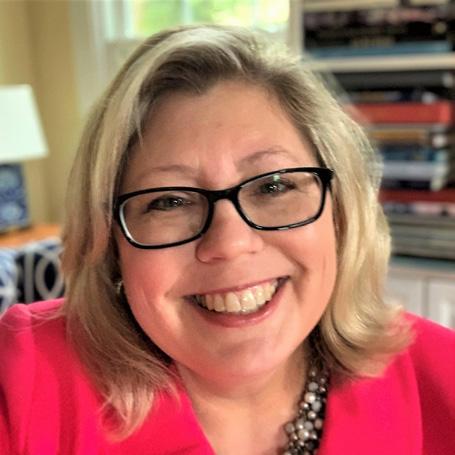
She is the mother of a child with autism and the founder of Special Needs Network, a California premiere autism advocacy organization dedicated to the needs of underserved families. The group has led insurance reform measures for individuals with autism and has

assisted millions of Californians with special needs through their legislative and policy advocacy and direct services.
Areva’s focus on the underserved and minority populations has always been game-changing, including her newest proj-
ect, Butterflly Health: a first of its kind digital behavioral health platform dedicated to underrepresented Medicaid populations. Areva said she and her brother, Rodney Bell, cofounded Butterflly Health in response to the changing dynamic brought on by the COVID-19 pandemic and recent social justice debates.
Areva said these seismic events placed a bright light on longstanding health disparities impacting underserved and underrepresented Medicaid populations. “One of the biggest disparities occurs with respect to mental health services. The American Psychological Association says America is looking at a mental health tsunami in the Black community. The country’s fragmented mental health infrastructure, shortage of providers, limited access to mental healthcare, and stigma lead to sizeable unmet mental health needs. A Harvard Medical School study shows a link between mental health conditions such as anxiety and several chronic physical illnesses,” she added.
According to Areva, these unmet mental health conditions result on average in an additional 12 million emergency room visits, increased medication costs, and have created an overall healthcare system burden. Despite the millions of people managing mental illness, very few access treatments, which she attributes to the shame and negative perceptions sometimes associated with mental illness. “Stigma can cause reluctance to seek help or treatment; lack of understanding by family, friends, coworkers or others; and health insurance that doesn’t adequately cover your mental illness treatment,” Areva said. Butterflly Health solves this problem while reducing the cost of total care.
The Butterflly Health app provides safe, private, evidencebased, racially and culturally sensitive programs, Areva said. “These include assessments, peer to peer support groups, wellness tools, and cognitive behavioral therapy, as well as teletherapy with coaches and licensed therapists.”

Users can seek care 24/7 through the app via iOS or Android in the privacy of their own homes. Through the assessments presented at onboarding, recommendations are made to condition-specific portals where the user can connect with people who have similar conditions and concerns. “Research shows that peer support is a critical intervention for a range of mental health issues,” she said. “In addition to the peer groups, the app provides access to wellness tools and cognitive behavior therapy programs. Users also have access to text-based coaching and one-on-one teletherapy if needed.”
Unfortunately, Areva added, with the high cost of raising a child with special needs, mental health is often placed on the back burner when a carer needs the most support.
“Regardless of your deep affection for your child, caring for someone with a disability can cause a lot of stress. Your child may have poor verbal communication skills, disturbing repetitive behaviors such as tapping and headbanging, and add to that the strict routines required by an autistic child and the astonishing number of consultations, treatments, and appointments, and you have a disproportionate strain on families,” she said.
If you feel like you are giving everything you got, consider it a red flag, Areva warned, as you could be heading toward burnout. “As a parent, you can love unconditionally with your whole heart, but when it comes to full-time caregiving, you have to keep something in reserve. If you try to give more than you can afford—physically, emotionally, or even financially— the strain can be immobilizing.”
If you notice yourself starting to feel guilty, sad, anxious, or depressed, it’s time to get help. “You cannot single-handedly meet all of your child’s needs. Enlist family members, friends, and professional help. That’s where an intervention like Butterflly Health comes in. Butterflly can provide private access
Providing a solution for someone’s mental health automatically impacts their physical health, and healthy people build healthy communities.
to supportive online peer groups, wellness tools, and programs,” she said.

Areva said overcoming obstacles is her specialty and credits her family as her inspiration. “I grew up with my grandmother, Doveanne, and Godmother Ethel in a housing project in North St. Louis, MO, surviving on welfare, food stamps, and Medicaid. I know first-hand what it’s like to be denied access to high-quality medical care,” she said.
But, as Areva proudly touted, it doesn’t have to be this way TODAY! “My grandmother and Godmother didn’t have a lot of money, but they gave me a lot of sage advice—especially ‘To whom much is given, much is expected.’ This mantra is manifested in Butterflly.”
Areva rose out of poverty and graduated with honors from Harvard Law School, opened one of Los Angeles’ largest female, minority-owned law firms, and launched a successful career in the media, in the nonprofit sector, and now as a health tech entrepreneur, where women of color make up less than one percent of founders supported by venture funding.

“Through Butterflly, I am able to give back to a community that has given so much to me. I am also able to have an impact on systemic health inequities that have plagued the healthcare system for decades,” Areva said. “Providing a solution for someone’s mental health automatically impacts their physical health, and healthy people build healthy communities. By using technology, mental health services can be made available to millions of underserved people who otherwise would go without the critical care they need.”
Areva hopes by giving people the ability to seek care in the privacy of their home or office without ever having to step foot in a doctor’s office will result in more people seeking help. “So many people are hesitant to even discuss their mental health issues with close friends or family for fear of ridicule or shame,” she said. “Butterflly allows you to avoid those delicate conversations and to address your concerns on your terms. It puts the power of your well-being in your hands.”
Butterflly Health: https://butterflly.com/ Special Needs Network: https://snnla.org/
Amy KD Tobik is the editor-in-chief of Exceptional Needs Today magazine. She coordinates and directs an impressive group of doctors, therapists, and writers to provide expert guidance and support for special needs families. A graduate of Sweet Briar College in VA, Amy’s experience includes more than 30 years of writing/editing monthly magazines, newspapers, technical documents/manuals, books, and websites. Her special interests include advocating for children, special needs families, and education. She is the CEO of Lone Heron Publishing, LLC.

 By Brett J. Novick, MS, LMFT, CSSW
By Brett J. Novick, MS, LMFT, CSSW
OFTEN, WHEN ONE THINKS OF 20/20, THEY THINK OF CLARITY OF VISION. WHEN WE REFLECT ON THE YEAR 2020, HOWEVER, WE WILL LIKELY THINK OF ANYTHING BUT CLARITY. THE YEAR WAS HALLMARKED BY PANDEMIC, CONFUSION, AND UNCERTAINTY IN JUST ABOUT EVERY ASPECT OF OUR LIVES AND LIVELIHOODS. IT WAS A YEAR WHEN WE BEGAN TO RECOGNIZE HOW PRECIOUS LITTLE CONTROL WE HAVE OVER THE WORLD, OUR HEALTH, AND THE FRAGILITY OF LIFE ITSELF.
When we recognize how trivial a role we have steering most aspects of our existence, we tend to try to dig in our nails to control those few items we believe we can muster some influence over. When our world spins at such a frenetic pace, we begin to feel anxiety, fear and worry. As we tread the waters of these emotions, we eventually may turn to anger as a means of addressing what we cannot seem to change.

Now, imagine our children who have even less control and understanding of the world around them. Having to quarantine, wear masks, or engage in virtual learning generates even greater worry, fear, and apprehension. As these emotions bubble under the surface, we may see a geyser of anger spring forth in our children’s words and actions.
So how do we quell this volcano in the midst of a world that right now seems at a flashpoint of uncertainty and anger? The following suggestions may help to address these concerns.
Imagine if you were on an airplane and did not know where you were going. This would likely create enormous anxiety because you have no control nor knowledge of the final destination. This is the same for children who rely on parents and adults to tell them what is ahead. Despite the fact life has taken on a greater degree of unpredictability amidst the COVID-19 pandemic, trying to
keep as much routine at home as possible will alleviate anger-based anxiety.
The world right now is encountering situations that are evolving and unpredictable. The answer “I don’t know” is perfectly acceptable as a parent because it is honest and avoids issues that may compromise trust if we give replies that are not accurate.

When we think of anger, it is never a single emotion. In other words, when a child (or any of us) feels anger, it is always due to some other parallel emotional trigger. For instance, if you see your child getting angry when remote learning, it helps to reflect another emotion aside from anger. “It seems you are frustrated you cannot understand the assignment…you seem worried you cannot get on the virtual learning program.” An accurate reflection of the full spectrum of emotions will help your child better comprehend their growing language of emotional expression.
Anger is a perfectly acceptable emotion in light of everything our children have been through in recent months.
That being said, anger still has to be handled in an appropriate manner. Three simple components are necessary to allow for productive assertive versus aggressive communication. First, the child must express the emotion they are feeling. Second, in as detailed a manner as possible, discuss why they are feeling this emotion. Lastly, talk about what they believe they need to help resolve the anger they are encountering. Parents, siblings, and other people simply cannot “mind read” what a child needs when they are angry, so we must try to utilize these components as much as possible to allow for positive communication(s).
As parents, we must take care of ourselves as best we can. Only then can we give our children the best we have.
As adults, we have a filter and frame of reference from which to understand the news. Children do not have that same understanding and may believe they are watching a situation occurring right outside their door. Further, when they see stories being repeated in the daily news cycle, each may seem like a new, overwhelming event. Fear can always lead to anxiety-based anger.
If your child is naturally more extroverted, the change to virtual learning and limited social contact can lead down a road of frustration and even anger. Encouraging supervised virtual playdates can help address this issue and avoid boredom-based anger.
Staying at home can lead a child rapidly down the road to boredom-based anger. As parents, we may try to offset boredom by giving a list of options our children can do. Doing so can short-circuit their ability to find means of self-soothing effectively. It is the child’s responsibility to try to independently come up with some items they can do to relieve boredom in conjunction with the parent as needed.
We often hear the words “fight or flight” when talking about anxiety. When we are anxious or in danger, our body prepares us to either engage in a conflict or run from it. When a child is angry, a similar situation is duplicated. This means they actually have two components in their anger: their thought component and their physical component. We may address the anger factor we see in the thought process and not notice the bodily components (i.e., the sweaty palms, the rapid heartbeat, the blood going to the extremities and away from the brain). In Daniel Goleman’s 1995 book, Emotional Intelligence, he determined it takes an average of 20 minutes for the
body to settle once an angry trigger has been activated in our thought process. If we don’t allow both the physical and neurological factors to settle down, we will have constant peaks and valleys of anger generated from a single emotional trigger versus settling completely from an incident.
When we get angry, we tend to use “black and white” thinking to support and further fuel our anger. Phrases such as “I am always in trouble…no one ever wants to play with me…I should be able to do that” seem to resonate. To stop fanning the flames of anger via identifying with the victim and righteous indignation, ask your child to look for exceptions. “Tell me about two times when you did the right thing and did not get in trouble. Tell me about a time when someone wanted to play with you. Tell me about three times when you were allowed to do something you wanted.” By doing this, you teach your child to debate their thoughts and offer a more balanced view of their world in general.
Children experience grief and loss differently than adults and over some different triggers. For instance, if your child does not get a particular toy, they may grieve the toy they wanted to add to their collection. That being said, children have had to lose a lot within the pandemic. They have lost time with friends, a regular school experience, playing outside, and a host of other activities (both seen and unseen). Empathizing with these losses and letting them know you empathize with the frustration they feel is okay, and a discussion of this aspect of life is beneficial.
COVID-19 is an issue that has taken a physical and emotional toll. As parents, we must take care of ourselves as best we can. Only then can we give our children the best we have. If you are not at your personal best, you certainly cannot be fully there for those who need you most.
Brett J. Novick,
a master’s
post-degree certification in Social Work and Educational Administration. He is currently earning his doctorate
Education. He has worked as a school social worker/ counselor for

child behavior, education, and mental health. He has been humbled with awards for his work in education, with the NJEA Martin Luther King Jr. Human and Civil Rights Award as well as the NJ Council on Developmental Disabilities Educator of the Year Award, the NJ State Governor’s Office Jefferson Award for Public Service, and his District’s Teacher of the Year and Ocean County Counselor of the Year.
Website: https://www.brettsbooks.com/
MS, LMFT, CSSW, holds degree in Family Therapy and in the last 20 years and is an adjunct instructor at Rutgers University and Stockton Universities. Brett has been a licensed marriage and family therapist in private practice while also serving in community mental health and substance abuse settings over the last two decades. Additionally, he has supervised in family counseling, school counseling, centers for abused and neglected children, and centers for adults and children with developmental disabilities. He has also been a licensed foster parent. Brett has authored eight educational, children’s, and self-help books. He has written for several national educational, parenting, and mental health magazines as well. He has presented nationally on the subjects ofIf a child is not talking by the age of three or is showing repetitive, stereotyped behaviors, don’t wait any longer. Get them evaluated as soon as possible. If you can’t find someone to do an evaluation (maybe your local agency has a long waiting list, or your community doesn’t have the resources), assume the child has a developmental problem and begin helping them yourself.
There are ways non-professionals can help a delayed child. You can help them identify, label, and ask for common objects. You can teach them to imitate sounds (then words) and actions, to follow directions, and to play with toys. You can help them match identical items and later
to recognize ones that are different. Begin these practical, valuable interventions while you wait for formal treatment.
2. Notice your child’s interests and expand them
Children with autism tend to intensely focus on narrow interests. Instead of viewing these interests as obsessions, view them as gateways to connecting with your child. Use whatever the child is passionate about to engage them, then expand that topic so your child stretches.
For example, if your child is “obsessed” with trains, bring home every train book your library has. Go online and find websites about trains. Go down to the train station or train

museum if there’s one around. Then start linking trains to other topics, like the colors they have on their sides. Then use your child’s interest in trains to help them learn their colors. Have your child find other things that are the same color. Now you’re also teaching the concept of “same” and “different.”
Don’t do things they can do for themselves. For example, let your child dress themselves as soon as they can; don’t keep doing it for them. Use visual cues, like pictures cut out of magazines, to teach your child which clothes to wear to school, to church, or when relaxing around the house. You can make it easier by storing the clothes in labeled drawers or shelves, but let your kid select outfits. The worst that can happen is they put on something totally inappropriate, and you help them change.
If your child has fine or gross motor struggles, don’t automatically do all the tasks that are hard for them. If it’s impossible for the child to do a task, of course, do it for them or find an alternative way they can do it themselves. But if it is medium-hard, or they just can’t do it perfectly, that’s okay. If you do it yourself because you can’t bear to see them struggle, you deprive them of the chance to practice, improve, and get more confident.
Most kids can learn basic hygiene tasks like toileting, brushing their teeth, and combing their hair. Make these tasks routine with visual cues on sticky notes or check-off lists. These tasks should be done at the same time every day. These everyday rituals are good practice for later daily chores and homework.

4. Teach your child appropriate norms like manners and how to introduce themselves
Use modeling and visual aids like social stories to teach kids appropriate manners and basic social conventions (like saying hello if the child can speak or waving goodbye). If your child has some bad habits, such as spitting out food or eating with their hands, don’t automatically assume they are due to autism or can’t be changed.
Let your child know your expectations. Tell them what to do instead of what not to do. Give them alternatives to bad behavior. If your child picks their nose in public, for example, put tissues in their pocket and around the house. Instead of telling them to stop picking their nose, remind them to use a Kleenex.

5. Expose kids to the world—don’t coddle them
Kids grow when they’re stretched. They depend on you for opportunities to expand their knowledge and confidence. While you have to protect your child sometimes (say another child is hitting them, or they are climbing something unsafe), unless they are in danger, try to refrain from stepping in right away. Give them a chance to figure out the situation themselves.
Autistic kids have challenges, but they’re capable of plenty of things. You never know what a child will be good at or interested in unless you expose them to lots of new things. Get them into new environments and situations. But don’t throw them surprises—always tell them where you are going and what you are going to do. But then do it.
6. Teach kids age-appropriate practical, daily tasks of living
Sometimes parents and professionals put all their attention on academics and problem behaviors and forget to teach simple, practical skills. This leaves kids at a big disadvantage.
but anything will do. They need to learn how to show up on time, take direction, and respond appropriately to feedback.
Teach intellectually capable kids proficiency in these basic areas: how to handle money (they should be able to pay for something by themselves and bring back the change), how to shop (older kids need to be able to navigate a grocery store checkout line), and how to use transportation (those who can drive need lots of extra practice before going on public roads, and those who can’t need repeated practice taking buses or other transportation). Kids who are cognitively able to work but can’t get themselves to do their job will probably not stay employed.
7. Give your child responsibility outside the house before they are out of high school

Kids who have no outside work or volunteer experience during high school are not prepared to succeed in college or a job after graduation. It’s too big of a transition.
Middle schoolers can do things like helping a neighbor around the house or work alongside a parent at a food bank handing out supplies, or joining a community cleanup day.

High schoolers need to find volunteer or paid work. If they can find something related to their interest, that’s great,
Every child is a unique, multi-faceted person. Autism should not define them—they’re much more than that. If you always see your child through the lens of a label or diagnosis, you limit your vision of them.
See the whole child. Focus on personality more than diagnosis. Keep your eye on potential, not limitations. Think in terms of strengths, not deficits. Your child has countless wonderful facets—uncover them, revel in them, and develop them.
Temple Grandin, PhD, is an American scientist and industrial designer born in Boston, Massachusetts. Her achievements are remarkable because she was a child with speech delay and other signs of severe autism. Numerous hours of speech therapy and intensive training ultimately enabled Temple to speak. Life was hard as a child, with constant teasing. After mentoring her high school science teacher and her aunt on a dance in Arizona, Temple was motivated to study and pursue a career as a scientist and livestock equipment designer. She is now an internationally renowned speaker on both autism and livestock management, and animal science. Temple is a professor at Colorado State University and was recognized in 2020 as one of the top 10 college professors in America. She has been inducted into the American Academy of Arts and Sciences, and the HBO movie about her life, Temple Grandin, received numerous Emmys.

Debra Moore, PhD, is a psychologist who has worked with children, teens, and adults on the spectrum extensively. After 35 years of active clinical practice and the mentoring of dozens of pre-and postdoctoral psychology students at the clinic she founded in Sacramento, California, she retired in 2015. Having written newspaper and magazine columns for over 20 years, she’s now devoting herself full-time to writing. She contributed chapters to The Nine Degrees of Autism (co-authoring one chapter with Dr. Grandin) and Internet Addiction in Children and Adolescents: Risk Factors, Assessment, and Treatment . She also facilitates the online groups “Autism Spectrum Across the Lifespan” (on LinkedIn) and “Autism and Asperger’s: “The Loving Push”—Building Positive Adult Lives” (on Facebook). She and Temple have recorded multiple videos that can be viewed on YouTube, including informal chats from each of their homes. She lives in rural northern Virginia.

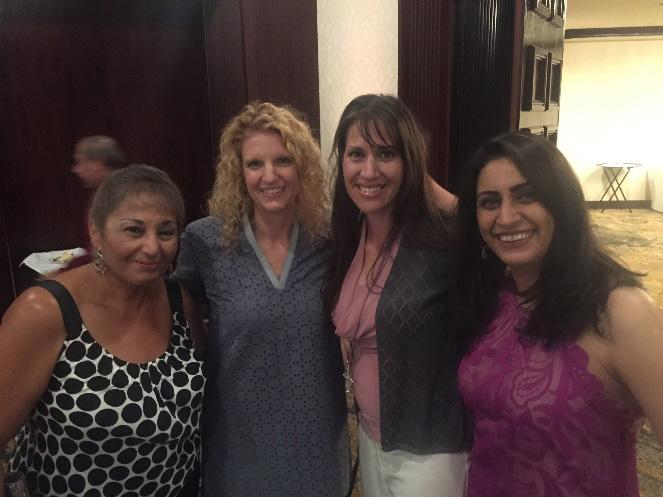 By Julie Hornok
By Julie Hornok
WE SAT IN THE DOCTOR’S OFFICE, ANXIOUSLY WAITING TO HEAR THE WORDS I ALREADY KNEW WERE COMING. THE TESTS RUN WERE DONE ONLY TO GIVE THE DOCTOR INFORMATION WE HAD LIVED THROUGH THE PAST YEAR. MY DAUGHTER HAD ALL THE SIGNS. SHE CHECKED EVERY BOX. THIS WAS NOT GOING TO BE A SURPRISE.
our daughter has autism,” the doctor said. The words that rolled off her tongue so easily landed heavily on my heart. Everything around me was white. White walls, white counters, white floors, white lab coat, and even my husband’s normally tan face was white. Such a sterile, clean, neat, and tidy environment to receive life-changing words that instantly turned my family upside down.
The doctor was kind but professional, giving us some guidance, but not nearly enough. She gave us a few words of encouragement, but none that could ease the desperation building inside my head.
Numb, we walked out of the office. Not knowing where to begin, I researched on the internet until my eyes burned. There were so many therapies, schools, and treatments to understand. But the answers to the questions I needed answered most were nowhere to be found.
Was it possible for my daughter to progress? Was it possible for my daughter to lead a productive, happy life? Were we going to be okay?
Where were all the parents one step ahead of me to guide me through this? I needed to hear there were kids as affected as my daughter flourishing out in the world despite the challeng-

es. I needed other parents to give me hope by sharing how their children are progressing and showing me the steps they took to get them there.
My mom gave me a newspaper clipping (because that’s what moms do), sharing the story of a family living over a thousand miles away with a daughter with autism who was thriving in high school. “See!” she said, “It is possible.”
The family’s names and the town they lived in were listed, but there was no contact info, so I searched until I found them. Facebook and social media didn’t exist; I did it the old-fashioned way. I called information, got their telephone number, and left several messages until finally, the mom called me back. She was kind but understandably guarded. Her daughter had been very affected when she was young and was indeed thriving in high school now. Her daughter loved to swim, participated in school activities, and had friends.
Encouraged, I now knew it was possible for my daughter to change, grow, and progress, but how could I help her get there?
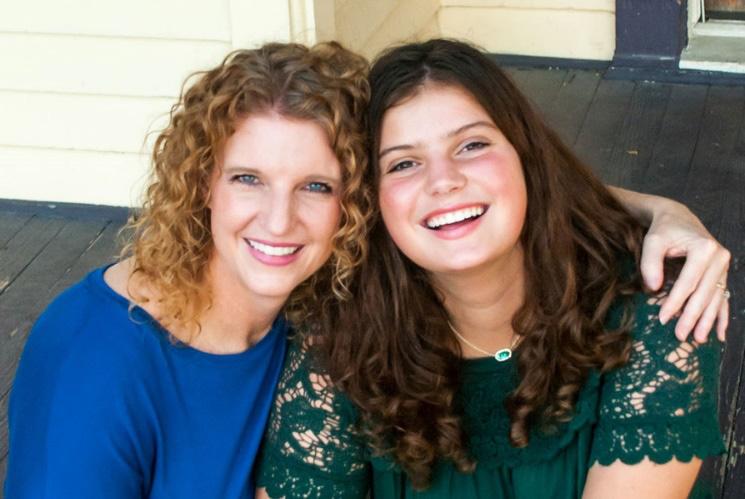
I followed her and the women she was with into the elevator. The little girl methodically pushed all the buttons and squealed with joy as they lit up. I smiled because that is exactly what my daughter would have done. As they got off the elevator, I decided to take a risk. “Excuse me, I don’t mean to offend you, so please forgive me, but does your daughter have autism? My daughter was just diagnosed, and I am desperately trying to figure out how to help her.” The woman answered, “I am not her mother, so I cannot say, but if you give me your number, I will have her mother contact you.”
Several hours later, my phone rang, and it was the little girl’s mom. We set a time to meet. She shared everything she was doing to help her daughter and then did one of the most impactful things anyone has ever done for me: she invited me to connect with a group of 20 smart, strong women who were all meeting to compare notes as they worked to help their kids with autism make progress.
This group became my sisterhood. By connecting with them regularly, not only did I receive the information I needed to help my daughter, but I also felt understood, supported, and guided through the ups and downs of living life with a special needs child. Now, 15 years later, I can still pick up the phone at any time and call these women. I know they would drop everything to help me, and I would drop everything to help them.
I dropped my oldest son off at his preschool, and just as I was leaving, I noticed an adorable little girl walking on her tiptoes and flapping her arms like a butterfly. The mannerisms and the way she held her body were so familiar. Was it possible she had autism just like my daughter?
Connecting with others threw me a lifeline and confirmed I was not alone in this journey. With others walking alongside, giving me help and encouragement, I was able to face the future with hope.
Julie Hornok is an award-winning author, speaker, and advocate for autism. She co-founded the non-profit Labeled and Loved to bring hope to special needs moms through online and in-person community-building events. Her book, United in Autism: Finding Strength Inside the Spectrum, is available at unitedinautism.com or anywhere that sells books online.

Website: https://juliehornok.com/ Nonprofit: https://www.labeledandloved.org/ Book: https://www.juliehornok.com/united-in-autism-finding-strength-inside-the-spectrum/
Facebook: https://www.facebook.com/unitedinautism
Instagram: https://www.instagram.com/unitedinautism/
Connecting with others threw me a lifeline and confirmed I was not alone in this journey.
 By Amy Nielsen
By Amy Nielsen
EMOTIONAL HEALTH IS THE ABILITY TO BE IN CONTROL OF YOUR THOUGHTS, FEELINGS, AND BEHAVIORS. PEOPLE WHO HAVE BALANCED EMOTIONAL HEALTH ARE AWARE AND IN CHARGE OF THEIR EMOTIONS. THEY CAN COPE WITH EVERYDAY STRESS AND RESPONSIBILITIES. THEY HAVE POSITIVE SELF-ESTEEM AND HEALTHY RELATIONSHIPS WITH OTHERS.
However, for parents and caregivers of children with exceptional needs such as cognitive impairments, physical disabilities, or complex medical issues, balanced emotional health can be at risk.
Why the emotional health of parents and caregivers of exceptional children may be at risk
The demands and responsibilities of raising a child with disabilities can be overwhelming and all-consuming. Children with exceptional needs may require numerous therapies both outside and inside the home. Many also have complex medical issues, which may require daily medications and at-home medical procedures that impact daily living. Children with exceptional needs may have behavior issues that require constant attention and interventions.
Financial burdens such as the expenses of therapy, medication, doctor’s visits, evaluations, and specialized education can add another layer of stress. Often, one parent may have to quit their job to stay home full-time as primary caregiver, causing added economic strain on the family. In addition to the family’s internal struggles, parents and caregivers often
feel isolated from extended family and friends, furthering the negative impact on healthy emotional well-being.

How do parents of exceptional children know if they are emotionally healthy?
If you are the parent or caregiver of an exceptional child, regularly checking your emotional health should be prioritized. To know if you are emotionally healthy, parents and caregivers should ask themselves, “Am I happier more often than I am sad?” If the answer is “yes,” then chances are you have balanced emotional health.
Additionally, analyze these three areas: your thoughts, feelings, and behaviors. Are all three in alignment? For example, a parent or caregiver could be responsibly taking care of their child and still have negative thoughts or feelings. Everyone has bad days, but if a parent or caregiver is having more bad ones than good, it may be time to seek help.
I have four children. My youngest son is five years old and has attention-deficit/hyperactivity disorder (ADHD) and autism spectrum disorder. I know firsthand how fragile the emotional health of an exceptional needs parent can be. He was three
years old when I got the news our life would look very different from what I had expected. I went through a roller coaster of emotions, from grief to anger to confusion to fear. What did this mean for the rest of his life? What did it mean for the rest of mine?
I began to notice the stark differences between him and his same-age peers. One day, I abruptly ended all relationships with friends who had children who were my son’s age. Hearing and seeing all the milestones their children were reaching but my son was not was very discouraging. Although they were disappointed, they understood and were supportive.
I knew this was not emotionally healthy, so I acted. I found a therapist who specialized in working with families impacted by exceptional needs. She helped me to not only define what I was feeling but to work through it. I realized I was not struggling emotionally because of my son’s diagnosis, but because I felt inadequate as a mother. I did not know how to handle this new-to-me parenting role.
In about six months, the therapist helped me accept that it was okay for me not to know all the answers and that my exceptional needs parenting journey was fluid and evolving. Over time my son’s needs will change, new research will be done, new therapies will be created, and I need to accept
that what I know today does not dictate tomorrow. My role is simple: to love him unconditionally and provide access to the best resources to help him achieve his optimal success level.
I rekindled those friendships and have since worked to make friends with other exceptional parents, building my support system one person at a time. I also now dedicate my life to helping other parents and caregivers like me balance their emotional health and feel supported in this unique parenting journey.
According to a recent article on Healthline.com, “Good emotional health is crucial to your overall well-being. If you feel like your thoughts and emotions are getting the best of you, taking care of your core needs like sleep and connection with loved ones can help. If that doesn’t seem to do the trick, consider working with a therapist or another mental health professional. They can help you identify the aspects of your emotional health you want to improve and help you come up with a plan.” (Lamothe, 2019)

Besides seeking professional help, other ways to improve and maintain emotional health are spending time with family and friends, reading for pleasure, or participating in a favorite hobby. Doing things that bring you joy will help to keep your emotional health balanced.
Your child’s success depends on you. They need you to be the best version of yourself possible to help them become the best version of themselves. By placing your emotional health at the top of your priority list every single day, you are not only setting yourself up for success but also your exceptional child!
https://www.healthline.com/health/emotional-health

Amy Nielsen is the creator and owner of the Big Abilities blog and podcast, which is her personal platform for providing resources and support to the exceptional needs community. Additionally, she serves as an Early Intervention Specialist and Parent Advocate for Collaborative Corner for Exceptional Children. Amy is also a freelance writer for Playground Magazine and a contributing writer at The Mighty and Autisable. She is the author of the book, It Takes a Village: Get Your Hands Dirty and Build Yours From the Ground Up, a step-by-step guide to helping families of exceptional children build the support system they so desperately need. Amy began her journey of helping families of exceptional children after her own son was diagnosed with autism spectrum disorder.
Website: www.bigabilities.com
Doing things that bring you joy will help to keep your emotional health balanced.
 By Catherine Whitcher, MEd
By Catherine Whitcher, MEd
SPECIAL EDUCATION IS NEVER GOING TO LOOK THE SAME AGAIN, AND THAT’S NOT A BAD THING. AFTER THE NATIONWIDE SCHOOL SHUTDOWNS OF 2020 AND MORE MISSED SERVICES THAN EVER THOUGHT POSSIBLE, SOME MIGHT SAY SPECIAL EDUCATION HAS FALLEN APART. PERFECT. NOW, TOGETHER, WE CAN WELCOME THE OPPORTUNITY TO PUT IT BACK TOGETHER BETTER THAN EVER!
Just like every other year, Individualized Education Program (IEP) meeting notices are going to be flying in and out of email inboxes at rapid speed in the second half of the school year. When it’s time to meet for your annual IEP meeting, you’ll be determined to be ready. A big focus will be on what worked and didn’t work since the last meeting and a clear plan of what needs to happen next for your child to be prepared for further education, employment, and independent living.
If you’re the parent at the table, you’ve rehearsed in your head a hundred times what you need the staff to know about your child’s education.
If you’re the teacher or therapist at the table, you’ve got piles of data to prove you’ve done your job in helping the student move forward.
No matter your role at the IEP table, you know there’s always a question of “What’s really going to happen at the IEP table?” It doesn’t have to be this way.
IEP meetings should not be filled with new information and recommendations you’ve never heard before you pulled up your chair to the crowded conference room table or logged into the virtual meeting room. Your entire process in developing IEPs with excellence needs to begin with the teamwork that allows for no surprises at the IEP table. When the IEP process is done effectively, everyone comes to the table with equal information on successes and areas that need improvement.
IEP meetings in 2021 need to be future-focused and solution-centered to ensure we are using our time wisely, as a team, to support the unique learning needs of the child.
The IEP agenda should be a combination of what needs to happen at the IEP table legally and a brief description of concerns that will be addressed during this specific meeting. Parents should request the agenda prior to the meeting and make suggestions of items to be added or removed based on priorities for the child.
Your fellow IEP team members need to know your concerns and bigger vision for your child throughout the entire IEP process. You may think your wants for your child are obvious, but they’re not. What you want for your child may be very different from what other parents want for theirs, and that’s okay!
Every IEP in every state has a section specifically for parents to address their educational concerns and set priorities for their child’s education. Use this section wisely, and it can change the entire trajectory of your child’s education.
Indecisiveness kills trust and increases conflict. This doesn’t mean that you shouldn’t take some time to decide the pros and cons of big suggestions brought by the team. Being collaborative and building an IEP requires you to say YES and trust the IEP team whenever possible. Use the data at the table to guide your heart and your gut to what is most appropriate for your child. With all of the chaos in 2020, it’s more important than ever that we make decisions and move forward.
You are not expected to have all of the answers all of the time. If you do not understand any part of the IEP process, this is not something to hide. Be bold and ask for help. Did you know training for parents, when it relates to an IEP goal, can be added to the IEP? It’s true! Whether it’s training on a specific math method, behavior management, or new speech device, parent training can be the missing piece for your child in finally reaching that next milestone.
Building a child’s strengths into the IEP for 2021 is a huge motivator for children to jump back into learning. Any time you can integrate a child’s preferred learning method or even their favorite cartoon character into their day, you increase the chance of the child staying engaged with the lesson. With all the stressors of 2020, connecting and building skills with preferred activities is a win/win for teachers and students. This strategy should be specifically noted within the IEP, either within the IEP goals or the accommodations and modifications section.
You must trust yourself. Before you can trust your IEP team, you have to own what you know and what your role is in helping your child be prepared for the future. If you don’t trust yourself, your knowledge, and your experience, others will struggle with trusting you, too. One of the most impactful statements you can make to your fellow IEP team members is, “Tell me what you want to help my child achieve and what’s in your way. I’ll help you.” Then wait, listen, and take in all the details without forming an immediate response. Ask more questions, try to fully understand the perspective of your IEP team member, then work together for a solution. With your knowledge of your child and the team’s expertise, you can solve almost anything.
Give credit 7.
Parents and teachers are more exhausted than ever before. We need to acknowledge and reward each other for both efforts and accomplishments. Praise and recognition help remind each other that we appreciate everyone’s efforts, especially on the tough days. Send an email or a coffee gift card to an IEP team member who has demonstrated consistent efforts to help your child reach both IEP goals and goes beyond what’s on paper. Watch the comradery build inside your IEP team when IEP communication is not always focused on the negative, and emails in the inbox may just be a big thank you.
Do not believe the misconception that successful IEP teams are happy, lighthearted, and smooth sailing. This is often not the case. Successful IEP teams are engaged, communicative, and constantly problem solving to either fix a problem or take situations from good to great. Highly effective IEP teams are always ready to right the wrongs because they know mistakes
are going to happen. If the mistakes weren’t happening, then you wouldn’t be trying hard enough.
It’s time for you to decide what you should continue doing, stop doing, and start doing to help the IEP team meet your child’s unique needs. Choosing to build trust and have integrity means making the decision that you always want to be getting better at your role in the IEP process. Trust within an IEP team demands personnel connections, constructive feedback, and a big picture perspective of helping your child be prepared for their future.
Imagine next time walking into your IEP meeting filled with hope, possibilities, and strength, not only because you’ve prepared for your role at the IEP meeting, but because you’re surrounded by a team of knowledgeable individuals clear in what your vision for your child entails. It’s entirely possible to take the unfortunate action of schools closing, hybrid models, and distance learning, and turn it into a true opportunity to improve your child’s education at a whole new level, side by side with your IEP team.
Catherine Whitcher, MEd, Founder of the Master IEP Coach® Mentorship + Network, has been building IEPs for the Real World for over 20 years. With experience as a special education teacher and special needs sibling, Catherine knows the importance of helping a child reach their potential both inside and outside the classroom. She is the host of the Special Education Inner Circle Podcast and currently leads Master IEP Coaches® nationwide in creating collaborative and effective IEP meetings. Her proven methods of building better IEPs have helped thousands of parents and schools work together to prepare students for further education, employment, and independent living.
Website: www.masterIEPcoach.com
Facebook: www.facebook.com/catherinewhitcher
Instagram: www.instagram.com/catherinewhitcher
LinkedIn: www.linkedin.com/in/catherinewhitcher
Special Education Inner Circle: www.specialedinnercircle.com Special Education Inner Circle Podcast: https://www.catherinewhitcher.com/podcast


 By Annette Nuñez, PhD
By Annette Nuñez, PhD
WE ARE NOW LIVING IN THE TIME OF COVID-19, WHERE LIFE IS UNPREDICTABLE, AND EXPECTATIONS CHANGE FROM WEEK TO WEEK. FOR CHILDREN WITH AUTISM AND OTHER SPECIAL NEEDS, THESE SPONTANEOUS AND ABRUPT CHANGES TO THEIR DAILY LIVES ARE DIFFICULT.
Trying to explain to your child why there is no school, why they do not have therapy, and why services are online can be confusing. What adds to the confusion is explaining the concept of social distancing as to why your child cannot see
their therapists, teachers, and peers in-person. Since many children have difficulties with communication and socialization, isolation during COVID-19 hinders their social development. That is why it is vital to come up with alternative ways for your child to socialize.
Discovering new ways to socialize your child with others will take a lot of patience, creativity, resourcefulness, and positivity. Your mindset and social interactions with your child will affect the way in which your child socially engages with you. Children with autism feel the non-verbal anxiety and stress of the world around them much more intensely than you do, so when you are interacting with your child, it is important to stay calm and positive. A positive mindset will lead to positive social interactions with your child, and your child will learn socialization is enjoyable. However, socializing your child during a time of social isolation can be challenging, so I have listed five ways to help do so during COVID-19.
You can’t expect your child to be social if you are not social. Now is the time to get out of your comfort zone and reach out to neighbors who have children or the parents of the peers in your child’s classroom. Be creative and set up virtual playdates, social distancing playdates, or even make a craft and leave it on the doorstep.
Take time throughout the day to teach your child how to play simple games that promote the concept of turn-taking and

following simple rules. How do children socialize? They socialize through play. Now is the perfect time while your child is at home to teach playing games in a one on one setting. Turn-taking is an important concept; start with games with simple rules and encourage the “my turn/your turn” concept. You can also take turns putting together puzzles or print out coloring pages and alternate coloring. Some simple games include Don’t Break the Ice, Honey Bee Tree, Memory, and any matching game. Fun physical games are Freeze Dance and Red Light Green Light, in which you can pair a visual with physical activity. For example, you can hold up a green piece of paper to prompt a child to start dancing, jumping, running, etc. Then, hold up a red piece of paper to stop. Once your child enjoys playing simple games, you can begin to teach games with more complex rules such as Candy Land, Hide-and-Seek, UNO, and Simon Says.
Schedule virtual playdates with peers in your child’s class one to two times a week. If you find your child has difficulty attending, start with a five-minute playdate and slowly increase the time. Also, encourage your child to play a game they are familiar with and have played with you at home in a one on one setting. You can play physical games such as Freeze
Dance and Red Light Green Light. More advanced games are Hangman and Charades. Keep in mind that you will have to facilitate the virtual playdate until your child has the skills to engage independently.

Plan a social distancing playdate at least once a week with neighbors, peers from your child’s class, or family members. During this time, do physical activities such as bike riding, hiking, playing games in your backyard, etc. Now is the time to be as creative as possible. This will allow your child to be out in nature and get some fresh air as well as learn the concept of how to interact with their peers while socially distancing.
Remember, you are not alone. Reach out to therapists and teachers to see what resources they can offer you to help with socialization.
Given all that is going on in the world today, it is important to remember not to be too hard on yourself. You are doing the best you can, and your child will be just fine. Just incorporating one out of the five tips listed above will help your child socially. Most importantly, your child depends on you as the parent to provide some normalcy in their lives. The best way to teach socialization to your child is to remain calm and encourage positive social interactions multiple times a day. Socialization begins with you!
Annette Nuñez, PhD, is the founder and director of Breakthrough Interventions, LLC, and Potential Health. As a licensed psychotherapist, Dr. Nuñez has worked with children with ASD and other related disorders for more than 26 years. She developed the Children’s Social Competence Scale (CSCS) as part of her doctorate work at the University of Denver. CSCS is an innovative early intervention evaluation tool that measures social competency in young children. Dr. Nuñez served as the Program Director for Connect Us, a non-profit organization that helps children develop positive relationships through facilitated play. Her research interests include the socialization and mainstreaming of young people with high functioning autism.

Dr. Nuñez co-wrote and self-published the book Friendship Is…. She leads many seminars both nationally and internationally and has consulted with multiple schools in South Africa and China. Dr. Nuñez also consults and oversees the therapists at the Breakthrough Interventions site located in South Africa. Dr. Nuñez has been featured in the Huffington Post, San Francisco Chronicle, NPR, ABC, CBS, NBC, FOX News, The Jenny McCarthy Show, and The Today Show.
Websites: http://www.btinterventions.com, https://www.breakingthroughautism.com, https://potentialhealthhemp.com Facebook: https://m.facebook.com/profile.php?id=462556703926821&ref=content_filter Instagram: https://www.instagram.com/breakthrough_autism/
 By Ryan F. Platt, MBA, ChFC, ChSNC, CFBS
By Ryan F. Platt, MBA, ChFC, ChSNC, CFBS
THIS PAST YEAR IS ONE MANY OF US WERE HAPPY TO BID FAREWELL. FROM THE COVID-19 VIRUS, THE ECONOMIC IMPACT OF THE VIRUS, THE GOVERNMENT BAILOUT OF TRILLIONS OF DOLLARS, AND THE PRESIDENTIAL ELECTION – WOW!
ould we have had handled much more in 2020? In light of all that occurred that had a negative impact, we must take the opportunity to learn some important lessons, especially when considering planning for your child’s lifetime support needs.
As you plan, please expect the unexpected. You must be able to consider what might occur and then attempt to build a structure around your family and your loved one with a disability that can survive and even thrive. Let’s list some of the “unexpecteds” that need consideration:
With record government spending in 2020 (due to the coronavirus bailout, The CARES Act), and with a national debt that is nearing $30 trillion dollars, we must consider the fact that the government benefits millions of individuals with disabilities and their families rely on may be cut or at the very least altered. This possibility means when you begin to plan for your child’s lifetime support, you should consider it with government benefits and services as they exist today, as well as without or at the very least with less. Another consideration that makes this “unexpected” possible is the increasing number of individuals diagnosed with disabilities and, therefore, the larger population that will need these benefits. As you build your family plan, ensure that you consider how to provide for your child with government benefits that pay for less than they do today.
Along with government benefits, taxes are another element that can greatly impact the amount of resources your loved one has to live on for their lifetime, and it is another area which individual families do not control. It is important to understand that in the face of record national debt, our nation enjoys some of the lowest income and capital gains tax rates in the history of our tax code. These two facts, high government debt and low tax rates mean that another “unexpected” could be higher taxes in the future. To be prepared for higher tax rates and a changing tax code, it is critical families understand how varying accounts that hold their money will be taxed today and in the future so that the most amount of their resources are available for the lifetime support of their loved ones instead of “giving” it, unknowingly, to the government in the form of taxes.
Most families will use a Special Needs Trust to house the money and assets that will be used to provide the lifetime needs of their loved ones. The primary reason for using

this legal entity is it allows the individual with a disability to have more than $2,000 available for their use (as long as the money resides inside the Special Needs Trust) and still qualify for government benefits. The “unexpected” to watch for with Special Needs Trusts is continued rule changes making it more user friendly with fewer restrictions on how the money can be used for the individual with a disability. We have seen some of this occur already in June 2018. In June 2018, the restrictions on Special Needs Trusts and the use of the assets held inside were eased by Social Security. As we consider the economic and fiscal landscape of the federal and state governments, we understand that the government may entice families to place more and more assets in this tool by loosening restrictions. If the government is able to do this, then the government may not need to provide as many benefits, which will reduce the government’s costs.
These are an example of the government offering an account that individuals and families can place money in for the benefit of the individual with a disability and still qualify for government benefits. This is another account (like a Special Needs Trust) to continue to monitor the rules. Again, the more money families and the individual with a disability can save to support future lifetime needs, the less the government will have to provide.
If 2020 taught us anything, it was that the unimaginable could quickly become a reality. It is imperative that as you plan for your loved one’s future that you build a structure that can work to support your loved one even in the face of the unexpected.
Contact a financial advisor who specializes in serving families with special needs for more information on how to prepare for the future. The team at A Special Needs Plan is driven by their purpose of Leading Families to Independence through an on-going, multi-generational plan. We are passionate about families confidently moving forward.
Website: http://www.aspecialneedsplan.com
Phone: 704-326-7910
Location: 101 N. McDowell Street, Suite 120 Charlotte, NC 28204
Ryan F. Platt, MBA, ChFC, ChSNC, CFBS, is a registered representative of and offers securities, investment advisory, and financial planning through MML Investors Services, LLC, member SIPC. A Special Needs Plan isn’t a subsidiary or an affiliate of MML Investors Services, LLC, or its affiliated companies. This article is not a recommendation or endorsement of any products.WELCOME TO THE INAUGURAL NATURE NOTES COLUMN. MY NAME IS AMY WAGENFELD, AND I AM SO PLEASED TO BE PART OF THE EXCEPTIONAL NEEDS TODAY FAMILY. I’D LIKE TO USE THIS COLUMN TO TELL YOU ABOUT MY VISION FOR NATURE NOTES AND SHARE WITH YOU A LITTLE BIT ABOUT ME.

Nature Notes is going to focus on all things green and why the connections we make with nature help to enrich our lives. I plan to talk about family-focused nature-centered activities to make you aware of various nature-focused organizations and their resources and share nature-based innovations such as inclusively designed playgrounds or DIY ideas. And in case you feel you must justify spending time in nature, I plan to sprinkle in some very digestible research that supports the myriad reasons interacting with nature is a good thing to do. And by the way, nature connections can happen inside just as well as outside, so if you are already feeling that being outside is not an option for you and your family, no worries. There is tremendous value added for indoor nature experiences as well!
I intend to create a conversation through Nature Notes. I want to hear from you, our amazing readers, to determine what you want to know. I plan to respond to questions and to share your ideas. I also envision I will be inviting guests to contribute to Nature Notes so you can hear different voices with a shared love of nature.
A little bit about me now. I am an occupational therapist, having graduated more than 35 years ago. When I did clinical practice, the bulk of it was with children aged zero to 21 and their families. I worked in school settings, early intervention, private practice, and outpatient pediatric settings. I loved those days and look back on them with fond memories. Once I went back to graduate school, where I got a master’s degree in human development and a PhD in early childhood education, I began a new chapter in my life as a professor. While much of my teaching was and is currently in occupational therapy and landscape architecture, I also taught in psychology and education programs.
I have always been a passionate gardener and am keenly aware that I am my very best self when I am in nature. Almost 20 years ago, I had an ‘aha’ moment in which I realized there was a connection to be made between occupational therapy, nature, and landscape design. It is a story worth telling as it shaped who I am today.
It was a balmy mid-spring afternoon in Boston. There we were, my then 13-year-old son and me, each perched in front of our respective computers, doing our homework. At that time, I was writing my dissertation, editing my first occupational therapy textbook, teaching three-quarters of the time, maintaining a small private pediatrics practice, and, oh yes, planning David’s Bar Mitzvah. I am not quite sure what happened, but something triggered my inner thermo-nuclear button, and I unleashed a torrent of profanities and complaints—pretty out of character for me. David, obviously surprised and yes, amused as any 13-year-old would be to witness Mom “hav-
ing a moment,” calmly stopped typing, gazed over at his out of control mother, and quietly offered, “Hey Mom, why don’t you go outside in your garden for a while?” I paused, looked at him, and responded, “Okayyyyyyyy.”

So off I went, still dressed for work, high heels and all, into my backyard sanctuary. For the next 20 minutes, I stroked and smelled my herbs, poked around, did some weeding, gazed at the vibrant palette of colors in the garden, looked at the sky, felt the light breeze on my shoulders, and just breathed. All the angst I was feeling simply melted away. I was transformed, and I was restored. I went back inside and was fully attentive, calm, and focused. Little did I know then that there is a name for what I had experienced. Environmental psychologists Stephen and Rachel Kaplan developed the attention restoration theory, which in its simplest iteration means the

I believe profoundly in the healing power of nature and hope you either already share my enthusiasm or, perhaps, will ‘grow’ to, as we begin this amazing Nature Notes journey.
most efficacious way to recover from mental fatigue, which arguably we all deal with daily, is through interaction with nature. For some, it is a walk in the mountains, a stroll along the shores of a sandy beach, the opportunity to look out a window at a verdant green expanse, and for many, including me, to be in a garden.

This was a pivotal moment for me. Growing up in a very busy household, tending the vegetable garden was not a chore; it was solace and comfort for me. But at that time, nearly 20 years ago, during my moment of complete transformation, I thought if I experienced restoration in nature, perhaps it happens for others as well. Being the curious occupational therapist I am, I wondered even more globally if being in and engaging with nature through gardening and other types of green interactions could be healthful therapeutic interventions for our clients, no matter their age or diagnosis. It is! I also learned about therapeutic and healing gardens and felt very strongly that as an occupational therapist and self-pro-
fessed nature gal, working with landscape architects to create the best possible outdoor spaces was what I needed to pursue. Today I am so honored to have helped (and continue to) design, develop garden programs, and evaluate many therapeutic and healing gardens, many of which are for children and their families. I will be sure to tell you about some of them. I also co-wrote a book called Therapeutic Gardens: Design for Healing Spaces that was published by Timber Press, and I am currently working on another one, which we can talk about later.
I believe profoundly in the healing power of nature and hope you either already share my enthusiasm or, perhaps, will ‘grow’ to, as we begin this amazing Nature Notes journey.
Please do take a moment to share your thoughts and suggest ideas for nature-related topics you would like to learn more about. I can be reached at amy@amywagenfelddesign.com. Again, welcome to Nature Notes!


Amy Wagenfeld, PhD, OTR/L, SCEM, EDAC, FAOTA, is Principal of Amy Wagenfeld | Design and Lecturer in the Post-Professional Occupational Therapy Doctoral Program at Boston University. She is a Fellow of the American Occupational Therapy Association and the Center for Health Systems and Design at Texas A&M University and holds evidence-based design accreditation and certification (EDAC) through the Center for Health Design, specialty certification in environmental modifications (SCEM) through the American Occupational Therapy Association, and certification in Healthcare Garden Design through the Chicago Botanical Garden. Amy presents and publishes widely on topics relating access to nature and is co-author of the award-winning book Therapeutic Gardens: Design for Healing Spaces published by Timber Press. When not designing gardens, researching, or developing garden and nature programs, Amy can be found happily digging in the dirt.
Website: www.amywagenfelddesign.com
Blog: http://workjournal.org/nurture-through-nature

Parents, teachers, therapists, and anyone who cares about a child or teen on the autism spectrum need this essential roadmap to prepare our youth for being successful adults in today’s world. Best-selling author, autism advocate, and animal science professor Dr. Temple Grandin joins psychologist and autism specialist Dr. Debra Moore in spelling out which steps you can take to restore your child’s hope and motivation―and what you must avoid. Eight life stories told by people on the autism spectrum, including chapters on subjects like how to get kids off their computers, how to build on their strengths and get back to caring about their lives, and how to find a path to a successful, meaningful life make this a “must-read book!”

Temple Grandin, PhD, is an American scientist and industrial designer born in Boston, Massachusetts. Her achievements are remarkable because she was a child with speech delay and other signs of severe autism. Numerous hours of speech therapy and intensive training enabled Temple ultimately to speak. Life was hard as a child, with constant teasing. After mentoring her high school science teacher and her aunt on a dance in Arizona, Temple was motivated to study and pursue a career as a scientist and livestock equipment designer. She is now an internationally renowned speaker on both autism and livestock management and animal science. Temple is a professor at Colorado State University and was recognized in 2020 as one of the top 10 college professors in America. She has been inducted into the American Academy of Arts and Sciences, and the HBO movie about her life, Temple Grandin, received numerous Emmys.

Debra Moore, PhD, is a psychologist who has worked with children, teens, and adults on the spectrum extensively. After 35 years of active clinical practice and the mentoring of dozens of pre-and postdoctoral psychology students at the clinic she founded in Sacramento, California, she retired in 2015. Having written newspaper and magazine columns for over 20 years, she’s now devoting herself full-time to writing. She contributed chapters to The Nine Degrees of Autism (co-authoring one chapter with Dr. Grandin) and Internet Addiction in Children and Adolescents: Risk Factors, Assessment, and Treatment . She also facilitates the online groups “Autism Spectrum Across the Lifespan” (on LinkedIn) and “Autism and Asperger’s: “The Loving Push”—Building Positive Adult Lives” (on Facebook). She and Temple have recorded multiple videos that can be viewed on YouTube, including informal chats from each of their homes. She lives in rural northern Virginia.

Most approaches to enabling children with autism to speak either don’t work or alienate the child…or both. The Autism Language Launcher gives you something totally new: a step-by-step guide that ignites language lift-off by:
Tapping into your child’s innate intelligence (often unrecognized by others)
Going with your child instead of against your child
Building the relationship necessary to inspire your child to want to communicate

Giving you the tools instead of outsourcing them to someone who doesn’t care as much as you do

Providing techniques that work with adults on the spectrum, too!
If you are a parent, relative, professional, educator, or caregiver of a child or adult who is: not yet verbal, making some sounds, using some words, speaking in single words, or using two-word phrases, then this book is for you. In a caring, understanding, and deeply supportive way, author Kate C. Wilde uses her decades of experience with children and adults on the spectrum to show you how to break through and finally enable your child to:

Begin speaking and communicating
Build their vocabulary…willingly
Expand sounds into words and words into phrases


Ask and answer questions

Construct their own original sentences (rather than simply repeating rote phrases)
Share their thoughts
In addition, you’ll learn to effectively address your child’s echolalia, repetitious language, and repetitive questions (without scolding your child, stopping your child, or “doing battle” with your child) in a way that your child will find supportive, bonding, and even joyful.

 By Ron I. Malcolm, EdD
By Ron I. Malcolm, EdD
MOST DEAF ADULTS REPORT GROWING UP IN HEARING HOUSEHOLDS WITH NO OR LIMITED ACCESS TO COMMUNICATION (DUCHESNEAU, 2007). HOWEVER, IT IS IMPORTANT THAT NOT ONLY THE PARENTS LEARN AMERICAN SIGN LANGUAGE (ASL) IN ORDER TO COMMUNICATE WITH THEIR CHILD, BUT THAT THE SIBLINGS IN THE HOME LEARN ASL AS WELL. WHY IS IT IMPORTANT FOR HEARING SIBLINGS TO LEARN ASL?
For many hearing parents, the first deaf person they may have met is their own child in the delivery room. However, because hearing and deaf babies look the same, the parents can be completely shocked to discover later that their child can’t hear. Immediately, involved parents may begin to divert their full attention towards the deaf child in the family. Hearing siblings may feel “overlooked and neglected” in this process of parents attending to the needs of their deaf sibling (Kluger, 2017). Involving the hearing siblings fully in the process is critical. Encouraging them to learn ASL and be able to communicate with their deaf sibling will assist them with being fully involved in the life of their deaf sibling.
Children who are deaf are busy throughout the school day. They may be dealing with regular education teachers, teachers of the deaf, a sign language interpreter, a speech-language therapist, a tutor, an educational audiologist, etc. Each of these individuals is committed to assisting your child with their communication needs. However, when the child comes home, they want to deal and interact with their “parents,” not parents attempting to be “teachers or therapists.” Having siblings in the home who can communicate in ASL will assist with the generalization of their language skills from school into the home environment in a natural and non-academic way.
Most deaf children feel overlooked during major communication times within the home. Having siblings who can utilize their ASL skills with their deaf sibling will assist with that issue. Mealtime can be particularly difficult for deaf siblings. This is a common time for family members to communicate about their daily events. Siblings who sign can ensure their sibling who is deaf can communicate with them directly and not have to access their parents to communicate for them. This allows everyone in the family to feel part of mealtime conversations, community events, bedtime stories, holiday and birthday events, etc.
Hearing children are attracted to ASL. When hearing brothers and sisters can sign, they tend to do it “naturally” throughout their day. Other hearing children at school, church, and in the community tend to notice this and ask about it. Hearing siblings who sign often encourage other hearing children to learn ASL without even fully understanding the influence they have. This can open up social
Ron I. Malcolm, EdD,
opportunities for your deaf child not only in the neighborhood but at school and in the general community at large.
One of the ways your child can expand their communication skills is to involve them with meeting other deaf children and deaf adults. Having hearing siblings who can sign will allow these hearing siblings to be involved with these interactions fully alongside their deaf siblings. Other deaf children and adults are more likely to get involved with your family if they know there is a viable means of communicating with them. Your child who is deaf will also be able to fully benefit socially, academically, and emotionally by being involved in such activities. This will assist them with developing “pride” in their deafness and not view themselves as a “burden” to their hearing families.
The bonding between siblings will outlast the relationship they have with their own parents. Hearing siblings who know ASL have an increased capability to become effective allies with their deaf sibling. Siblings who can communicate with each other have a much better chance of developing a normal sibling relationship (Berkowitz & Jonas, 2014). This communication between siblings will also allow parents the opportunity to treat both the hearing and deaf sibling equally and ensure they are offered the same opportunities.

Berkowitz, M & Jonas, J. (2014). Deaf and Hearing Siblings in Conversation. Disability Studies Quarterly.
Duchesneau, S. (2007, August 31). Communication Abuse and Deaf People. ASC on the Couch. Retrieved August 31, 2007, from https://deafcounseling.com/communication-abuse-anddeaf-people/
Kluger, J. (2017). Sibling of Deaf and Hard of Hearing Children. The New Science of Siblings.
His educational background includes a bachelor’s degree of arts (BA) in English from Acadia University, Nova Scotia, Canada; a bachelor’s degree in Education (BEd), Special Education from Acadia University, Nova Scotia, Canada; a master’s degree in Education (MEd), Deaf Education from L’universite de Moncton, New Brunswick, Canada; a master’s degree of arts (MA) in Counseling from Gallaudet University, Washington, DC; a master’s degree of science (MS) in School Administration from Fort Hays State University, Hays, Kansas; a doctorate in education (EdD), School Leadership from Northern Arizona University, Flagstaff, Arizona; post-doctorate studies in autism spectrum disorders at Northern Arizona University, Flagstaff, Arizona; and post-doctorate studies in positive behavior supports at Northern Arizona University, Flagstaff, Arizona. He has worked for the past 36 years in the field of Deaf Education. He has a profound bilateral sensorineural hearing loss and wears two Phonak hearing aids.
 is an Assistant Director of Special Education for a public school district, an Associate Faculty Member with the University of Phoenix, and a Special Graduate Faculty member at the University of Kansas.
is an Assistant Director of Special Education for a public school district, an Associate Faculty Member with the University of Phoenix, and a Special Graduate Faculty member at the University of Kansas.
ASK ANY PARENT, AND THEY WILL TELL YOU THE COVID-19 PANDEMIC HAS ALTERED THEIR LIVES. WHILE THE STRUGGLES WITH ONLINE EDUCATION, RE-ACCLIMATING STUDENTS, AND FACE MASKS FOR TEACHERS AND CHILDREN ARE REAL, THE CHALLENGES FOR SPECIAL NEEDS FAMILIES ARE MORE COMPLEX AND INTENSIFIED. WITH ENVIRONMENTAL CHANGES (CLASSROOMS WITH “HANDS-ON” LEARNING TO COMPUTERS OR IPADS) AND STRUCTURAL CHANGES (CLASSROOMS TO VIRTUAL CLASSES, ZOOM, ETC.), A CHILD CAN FEEL ANXIOUS AND UNCERTAIN, EXACERBATING OTHER ISSUES.
Each special needs child has unique perceptions of what one’s world is or should be. These needs are often met through a specific teacher or accompanying aid who walks them through what we might consider a very normal process, like turning on the computer, typing in our password, and going to the right program for whatever task is assigned. Due to the pandemic, everything for every student changed. Any variation from normal is not always a welcome addition in the special needs world. Physical needs, along with medical or mental challenges, can create a huge set of problems for both the teacher and parents when they can’t be met.

Some school systems offered video programs for both academics and physical therapies. But parents, unlike teachers and therapists, are not trained to carry out the task with their child, despite their desire to do so. Training isn’t the only issue. A child doesn’t always respond well to a parent as teacher. They see their parents as “parents,” and regardless of how hard either side tries, the parent just cannot fill the teacher role, causing frustration for both parent and child.
These complications have created a virtual hole in the education of many of our special needs children. One of the biggest problems with the closure of schools during the pandemic is the lack of ability to sustain developmental targets and fundamental skill sets required for autonomous living.

Becky Poling from Ohio shared that her autistic daughter, Rachel, was a senior when COVID-19 hit. Rachel had been active in 4H since she was eight years old. She had learned to navigate different environments, developed social skills, and was active in her local youth group. Before the virus happened, she was planning to attend a program five days a week designed for young autistic adults to further education and job training and help her sustain her skills. She was ready for this change.
Then the pandemic happened, and everything was canceled. It was abrupt, and she was unprepared. Her daughter, Becky
explained, “spiraled downward.” New medications were required to help her handle the grief and anguish she experienced. Plans for her now have changed due to a distinct regression of learning skills and emotional upheaval. Her parents enrolled her in a program for one day a week, and hopefully, Rachel will be able to move up to the former status over time.
It may be difficult to grasp a child grieving over the loss of her normalcy, but it happens. Dr. Bergina Isbell, Chief Medical Officer of Led Life, LLC., and mother of an autistic and attention-deficit/hyperactivity disorder (ADHD) son from Maryland, explains, “Whether it is the loss of a loved one to an illness, a job loss, or the loss of independence due to restrictions…. patients and family need to learn to grieve well.” [They need to] “allow themselves the time to go through the grief stages.” For a child experiencing loss, there is a sense of death. Those feelings are real and need to be worked through. Dr. Isbell offers her link for families who would like to reach out with particular questions: https://drbergina.as.me/discoverycall.
Adding to the problems of abrupt changes and feelings of loss, the very nature of this group of people, while there are exceptions, thrive best when they can give or get a hug or experience other physical touching, even if it’s just rubbing their arm in comfort. The physical realm they have always known is now non-existent. This only adds to anxiety and uncertainty, chinking away at their already fragile world.
Schools have begun to reopen with strict guidelines and precautions, and many special needs children are grateful, even while some teachers remain uneasy over the heightened possibility of contracting the virus. Students are delighted to return to some form of normalcy, even if it includes wearing a mask. They want to see their friends again and work in a structured environment. They admit learning online can be challenging. To be physically around teachers and mentors they trust and other students who are friends offers some level of stress release.
Yet masks do make a difference. Mrs. Bonne Lease, a Kindergarten teacher from Maryland who has several special needs children in her classroom every year, explains children aren’t necessarily opposed to wearing a mask, especially if they are following adult role models. It does become more difficult, however, to display facial expressions hidden behind the masks. Young children respond to body language, including looks that denote a disciplinarian expression or, conversely, a smile that signifies encouragement.
Callista Powell, a deaf/hard of hearing teacher from South Dakota, expounded further on the mask conundrum. Her students read lips and facial expressions to “hear.” When the face is covered, they cannot see what is being said. This creates an even greater chasm between peers, teachers, and the population at large.
She explains it’s vital these students continue language exposure and accessibility. “Ninety percent of deaf children come from hearing parents, who may or may not use sign language
for communication.” While technology is wonderful, there are frustrations and barriers for deaf and hard of hearing children. Visual aids are very important in this environment to enable the deaf child to gain an understanding of a concept, especially without the aid of being able to read the teacher’s lips.
Children challenge us. It’s important to model what we believe because, as Mrs. Lease explains, “Children learn by watching others.” Further, she believes this begins from the moment they walk off the bus in the morning. Expectations, routines, and a love of learning can be seen through the eyes of even the youngest student. Purposeful planning ensures meaningful learning, even when it looks different from what we’ve always done.
Clearly, the effect of the pandemic has been profound. Yet, there are ways to manage stress and sustain some level of calm and control when there are numerous unknowns. According to the article Parenting Children with Special Needs during COVID-19 , relying on strategies that produced the best outcome before the pandemic is a place to start, including:

• Maintain consistent medication, mealtime, and bedtime routines
• Present consistent visual clues to upcoming activities or events
• Keep consistent scheduled quiet time
• Offer consistent praise for a job done well
Additionally, contributors to this article add these ideas:
• Be purposeful in conversation, using words which clearly define expectations
• Be involved with your child’s education by keeping in touch with your child’s teacher
• Discuss with your child what they do in school each day
• Encourage your child’s teacher and the staff when possible—a positive attitude goes a long way
• Ask questions for clarification
• Be an advocate for your child, gleaning all the information your child needs specifically
• Use all the role models you have at your disposal for success
• Spray essential oils like lavender, lemon, or peppermint mixed with distilled water on the outer layer of masks to help with anxiety (be aware of possible allergic reaction)
• Allow your family to slow down without guilt
• Provide additional personalized sensitivity for increased anxieties and emotional distresses
Students aren’t the only ones needing to manage stress, however. Both teachers and parents are in similar need. As parents, it’s vital to remain positive, healthy, and remember to schedule time for fun, because these can help alleviate stress. Schedules can be daunting, but if you are burned out, no one can be productive.
Other tips and ideas for managing stress include:
• Take breaks from being a teacher and just be a loving parent
• Stay connected to other parents and support groups with special needs children
• Stay connected to family, friends, and loved ones, allowing them to help you when you need it
• Limit time listening to or watching the news
• Distance yourself from negative people
• Embrace the changes, accept the limitations, and let go of unnecessary expectations
• Focus on your strengths rather than what you consider your weaknesses
COVID-19 changed the world. We are all adjusting to changes every day. As special needs parents, teachers, and special needs students, the goal is to press onward. Changes are inevitable as new information is gathered and disseminated daily.
You are resilient! You can do this successfully when you stay positive, focus on the good, be kind to yourself, and believe in one another.
Klass, Perri, M.D “The Pandemic’s Toll on Children with Special Needs and Their Parents” The New York Times, 27 July 2020. https://www.nytimes.com/2020/07/27/well/family/children-special-needs-pandemic.html
Mayo Clinic Staff “Parenting children with special needs during COVID-19,” 21 July 2020. https://www.mayoclinic.org/diseases-conditions/coronavirus/in-depth/special-needs-parenting-covid-19/art-20487665
North, Anna. “We need to talk about what school closures mean for kids with disabilities,” 6 August. 2020. https://www. vox.com/2020/8/6/21353154/schools-reopening-covid-19-special-education-disabilities
Stein, Perry and Strauss, Valerie. “Special education students are not just falling behind in the pandemic — they’re losing key skills, parents say” The Washington Post, 7 August 2020. https:// www.washingtonpost.com/local/education/special-education-students-are-not-just-falling-behind--theyre-losing-keyskills-parents-say/2020/08/05/ec1b91ca-cffd-11ea-9038-af089b63ac21_story.html
Isbell, Dr. Bergina. Personal Email Interview. Chief Medical Officer of Led Life, LLC. and Special Needs Mom. Ellicott City, MD, 30 September 2020
Lease, Bonnie. Personal Email Interview. Kindergarten Teacher, Greensboro, MD, 27 September 2020
Poling, Becky. Personal Email Interview. Special Needs Mom, Marysville, Ohio, 24 September 2020
Powell, Callista M.Ed. Personal Email Interview. Special Needs Teacher, Spearfish, SD, 26 September 2020

Margie Harding is a wife to Charles, mother to five adult children, grandmother to 17 grandchildren, and a loyal friend and writer. She has an AA degree in Early Elementary Education and, while not currently enrolled in any formal school environment, is a perpetual student in a variety of different subjects! She enjoys quilting, reading, and learning new things. Her passion is creative writing, particularly in special needs, but also in the Christian genre. She dabbles in other genres, as well.
Website: www.margieharding.com
LinkedIn: https://www.linkedin.com/in/margie-harding-6212a859/
Books: https://www.amazon.com/s?k=Margie+harding&i=stripbooks&ref=nb_sb_noss_2

IF 2020 HAS TAUGHT US ANYTHING, IT’S THAT (TO QUOTE MIKE TYSON), “EVERYONE HAS A PLAN UNTIL THEY GET PUNCHED IN THE FACE.” NO MATTER HOW WELL-PREPARED YOU THINK YOU MAY BE, MOST OF US AREN’T TRULY READY FOR THE CURVEBALLS LIFE CAN (AND WILL) THROW AT US.
That’s why it’s important to have a plan in place for the future if something unexpected happens. Having a plan in place for the future will ensure you won’t just survive the unexpected, but thrive
Creating financial plans is particularly important for special needs families. Over the years, I’ve found many of them live “paycheck to paycheck” in both a literal and emotional sense. Having a plan can alleviate that burden and help secure your future.
Though you are statistically likely to break most of your New Year’s resolutions within a couple of weeks, creating a financial plan should be one you follow through to the end. Every small step towards your plan is a step in the right direction.
When building anything new, the first thing you need to do is clear away the old and lay the foundation.
Here are four simple steps you can take that will help you build a solid foundation for your financial plan.
The first step with any planning is to know where you are and what you have! I find the beginning of the year is the easiest time for families to do this. Not only are they thinking about taxes (and hopefully tax refunds), but they are also getting all their year-end documents in the mail. Develop a system that will help you take inventory of these documents and organize them in a way that will make it easy to find what you are looking for in the future. If you’re having a difficult time, don’t
be afraid to use software or outsource the work to a financial planner or accountant. This step is the absolute hardest obstacle for many families, and this time of the year is the perfect time to do it!
As painful as it may be, when you have finished organizing everything, take a hard look at the things you didn’t know you had. (We know you have unused Audible credits if you ever signed up for them). Approach the process like you would clearing out a junk drawer: if you want to put things in a smaller drawer, you need to get rid of the things that are clogging up your finances and then consolidate the things you do need. Find ways to make the things you need more efficient and cheaper. Do you have smaller accounts with low balance fees that can be combined into one account? Do you have smaller life insurance policies that can be combined into one life insurance policy and potentially save money with more coverage? It happens more often than you might think.
You do not always need to know exactly how something works or what something is, but you do need to know why you opened it in the first place! For example, you may not be able to re-write an entire will or repeat all the fancy legal jargon an attorney used. However, you should be able to at least tell someone else the reason why you got the will and what you intend to do for yourself.

To get the most out of your financial plan, you need to determine if anything is missing and take steps to correct those omissions. Here are the three most important ones to consider:
y When was the last time you had an independent insurance agent shop around your auto/home insurance coverage? If you haven’t done this recently, consider doing it now. Who doesn’t want more coverage for less money?
y Do you have an estate plan or a will? If not, stop reading this and get one! You don’t need to spend thousands of dollars you don’t have, although, for complex planning, it really makes sense to find a trusted advisor. Something is always better than nothing.
y Are you putting enough money into your own retirement fund? As a parent, you are your child’s champion, dedi-
cating countless hours to ensuring their future is secure. However, you also need to remember you can’t work forever. As good as an ABLE account is, you should also make sure you are taking care of your own retirement funds first.
You may not even know it yet, but in taking these simple steps, you have already started to plan for the future. You’ve investigated ways to improve your financial situation, and you are now better equipped than ever for one of life’s curveballs to hit (because they always do).
If this article leaves you with more questions than answers, don’t worry! We know that this is a lot of information to take in, and you may have some questions that only you can answer. Moreover, if you still have lingering questions, we will have a bi-monthly column where you can submit all your questions for us to answer, starting in the next issue!
a financial planning firm that specializes in helping individuals,
families
autism
intellectual disabilities gain financial security. Andrew earned a Master of Science

Financial Services (MSFS) and has achieved the distinction of being a Certified Financial Planner™ (CFP™). He also has certifications as a Behavioral Financial Advisor (BFA™), Chartered Special Needs Consultant (ChSNC®), and an Associated Estate Planner (AEP®) among his other designations. Andrew frequently advocates for those with autism and other intellectual and developmental disabilities. Andrew is a frequent guest speaker on his own experiences or on various financial and insurance planning topics.
Website: Planningacrossthespectrum.com
Email: Andrew@planningacrossthespectrum.com
4. Be proactive in filling gaps in your financial planAndrew Komarow is the founder of Planning Across the Spectrum, caregivers, and with and in
When considering a range of subjects and topics to address in my article, I began by thinking about the events we are all living through with the raging threats of illness and long-term disabilities due to the coronavirus pandemic. Since we are now more than six months into this global plague, I have had plenty of time to consider how our new life has impacted my family, my life, and specifically, the life and behavior of my 40 plus son diagnosed over 20 years ago with high functioning autism.
I published a book two years ago called I Am Me: My Personal Journey with My Forty Plus Autistic Son, in which I share with my reader my fears, anxieties, and worries about his future as a young man approaching middle age. I have spoken in many professional and general forums about issues relating to the aging process and have raised my concerns about the lack of good research which might inform decisions regarding his future—decisions which persons such as Cos Michael, writing in May 2016, ponders as she struggles to prepare for her own future as an aging autistic. I have advocated on his behalf for an increase in the quality and distribution of medical and social services as his needs change over time. And my adult children, his siblings, remain engaged in supporting his interests even as they struggle to maintain some normalcy in their own daily lives, challenged as they are with special needs children of their own.
The recent passing of the Supreme Court Justice, Ruth Bader Ginsburg, an advocate for the recognition of the needs of the marginalized, brought into sharp focus for me the arguments for suitable housing for the mentally disabled population, including autistic adults, especially during the pandemic. Writing for the majority in the landmark case Olmstead v. LC, 1999, this case was based on the 1990 Americans with Disabilities Act (ADA), which focused on the rights of the disabled to live in their own communities, known as the “integration mandate.” The plaintiffs in the case, Elaine Wilson and Lois Curtis, were
admitted to the psychiatric unit of a Georgia state-run hospital where they were held in isolation for years following their treatments, even after being medically approved to move to a more community-based setting. This situation, according to the court ruling, perpetuated assumptions that such persons were “incapable or unworthy of participating in community life” and was in violation of the ADA, which protects individuals with disabilities from discrimination on the basis of the disability and ensures services to the disabled, including community-based services, state-funded supports, and housing options.
Confronting the lack of reliable and good services, which certainly should have been developed and put in place as a response to the lockdowns and restrictions on movements, I turned to my son to hear from him directly about how he felt about the changes in his life since the pandemic spread through our community. I was especially interested in how he felt about the necessary government-regulated restrictions on social interactions to try to reduce the transmission of the coronavirus. After all, as Karl Wittig described so well in his October 2019 article in Autism Spectrum News, while some adults on the spectrum prefer to be by themselves, the fact remains that most, not unlike neurotypicals, have a strong need and desire for social life and community involvement. During
Even freedom of movement has now been restricted, sometimes resulting in terrible tragedies and fatal errors of judgment by the authorities.
regular times, for example, autistic adults, including my son, were significantly challenged with trying to connect with people and engage in appropriate social interactions with those in and around their communities.
His response was telling as much for what he had to say about the social challenges as the way he put forth his own thoughts and belief systems about life itself. He commented about the importance of traditions, such as religion, as motivating and essential sources of balance and comfort to help us through our moments of fear and uncertainty. He talked about his taking care to look after his well-being through practicing good nutrition habits, regular outdoor exercise, engaging in hobbies and things of interest in his life which contribute to his sense of security, such as music, online research, and reading. Staying active, positive, and forward-looking, he maintained, helped him to put things in perspective.
My son had studied at a Yeshiva—an Orthodox Jewish seminary—for several years, so he was well-versed in traditional Jewish texts. He recommended to me that I read Psalms to help me through anxious moments, suggesting some which gave life a sense of meaning and hope. He also reminded me of the importance of remaining connected to my community of friends and family.
In describing texts which could be useful for me to read to help ease some of my own worries, he referenced the important and overriding dictum in Deuteronomy 30:19: “I have set before you life and death, blessing and curse. Choose life” to
remind me that remaining vital, hopeful, and healthy during these miserable days is not only a choice but an imperative.

I can only assume that life today as we know it—life during a pandemic—has given our autistic adult children a rare and unique moment to contemplate how they fit into a world which has so often neglected and demeaned them as individuals, underestimated their talents and worth, misunderstood their behaviors and intentions and chosen to ignore their very human needs, including socialization and community. So often deprived of the right to choose, the right to community-based services, and the right to move freely in and around the community, our adult children now think about what others must be feeling when their very own choices are limited due to the pandemic.
The irony of it all was not missed by my son.
For example, social isolation has become the norm, especially during prolonged periods of lockdown, and the sense of security and well-being is no longer a given considering the severity of the economic downturn. Even freedom of movement has now been restricted, sometimes resulting in terrible tragedies and fatal errors of judgment by the authorities. A recent event in East Jerusalem, which involved the killing of a young, 32-year-old autistic adult Eyad Hallaq, who was innocently walking to his daycare center one Saturday morning and mistakenly identified as a terrorist, highlighted the nervousness, tensions, and pressures we are all living with today. This incident shook my family to the core and reminded us, yet again, of our son’s vulnerability.
The story of Eyad has brought into sharp focus a number of issues often ignored as we had gone about living our lives in times of normalcy, predictability, and certainty. We now must pay attention to the necessity of mask-wearing to protect ourselves and others from transmissions. We need to be aware of persons around us, no longer invisible, as we make efforts to social distance. Counterintuitive though it is for us social animals, we are prescribed where and how we can exchange informal greetings, how many persons we can accommodate in places of worship and in our homes, and where we can travel. Quarantining as a response to exposure to the virus or being a contagion ourselves, we are forced to remain in isolation, often in unfamiliar surroundings, as we all struggle together to stop the advancement of this pathogen.
Perhaps these times require us to think very carefully about what it means to be empathic, to be sensitive to the stranger in our midst, or to consider the needs of others as important as our own. Often accused of lacking this characteristic of being able to empathize, the adults on the spectrum suffer dearly when persons who are ignorant regarding autism draw unfair and inaccurate conclusions about what has been perceived as strange behaviors: turning one’s face away from another in order to avoid any contact, masking one’s face to become
almost invisible or unrecognizable, camouflaging as a means to maintain social distancing, and reducing social encounters to the point of personal, self-imposed social isolation.
In a sense, then, the world of the autistic as understood and described in the research literature and evidence-based studies has become, to some degree, our own world today. Isolation as a goal rather than a strange behavior is lauded and appreciated. Social reclusiveness, no longer exceptional, is a state of being very familiar and comfortable for our autistic adults. And living with constant uncertainty, and by extension, free-floating anxiety has become the norm for many of us. Reports by mental health experts practicing during the 2020 pandemic, for example, describe an uptick in rates of depression by nearly 50 percent.
Rather than being analyzed and interpreted as mental instability or paranoia, which according to some professionals, characterizes and describes many adults with autism, our adult autistic children can be seen as understanding very well what fear and pain is all about as these feelings are grounded and confirmed by facts.
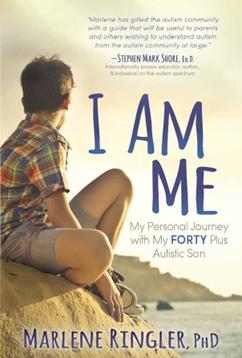
In a very real sense, then, our autistic adults may have become our bell weathers, our eyes into life framed by another reality and perhaps, just perhaps, a rare moment in our human history to express genuine empathy for the adult with autism in our midst.
Michael, Cos. “Why We Need Research About Autism and Ageing.” National Autistic Society, May 2016.
Wittig, Karl. “Social Activities and Communities for Individuals with Autism: Meeting a Basic Human Need.” Autism Spectrum News, October 2019.
Dr. Marlene Ringler is a PhD in English Language and Literature, a trained and certified teacher, CEO, and founder of the international Ringler English Language Institute. Her company was recognized as a lead vendor for global training for multinationals to include Toyota, Intel, IBM, and Microsoft. She pioneered the concept of in-house training specifically in business settings. When living in the United States, Marlene was the co-coordinator of the English for Specific Purposes and English as a Second Language adult training programs for refugees and immigrants in Montgomery County Public Schools in Maryland. Her program was nominated for special recognition by the White House for its work in adult literacy.
An advocate for persons with disabilities, Marlene encouraged people in school systems in the US and Israel to develop programs for students who might not otherwise be able to function in a typical classroom. She counseled and guided teachers, administrators, and parents to recognize the needs of the disabled population. Today, Marlene works closely with service care providers to maximize the potential of the autistic population in a work setting. In addition, she counsels and advises parents about resources, opportunities, and the legal aspects of raising an autistic child to adulthood. Marlene and her family currently reside in Israel and sponsor, host, and organize conferences, social events, and gatherings to promote awareness about the needs of the autistic adult.
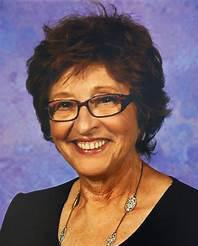
Website: https://www.marleneringler.com Facebook: https://facebook.com/authormarleneringler/ Twitter: https://twitter.com/MarleneRingler
LinkedIn: https://www.linkedin.com/in/dr-marlene-ringler/
Reports by mental health experts practicing during the 2020 pandemic, for example, describe an uptick in rates of depression by nearly 50 percent.
“Deanna Picon’s passion and commitment is inspirational as she lovingly guides families affected by autism on their journey together. Her published works provide the reassuring support so many parents with special needs children seek on a daily basis. Deanna is a real asset to the autism community.”
—Amy KD Tobik, Editor-in-Chief,Exceptional Needs Today
The Autism Parents’ Guide to Reclaiming Your Life provides special needs parents with proven techniques and a clear-cut action plan to build a good life for themselves and their family. This ground-breaking and life-affirming book was written specifically for and is completely about the parents of special needs children.
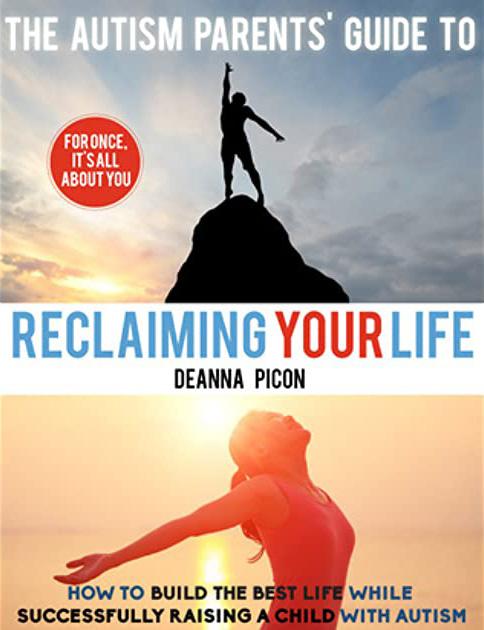
Whether you’ve just been handed the diagnosis or you’ve been dealing with the autism challenge for years, you will find help in these pages. Whether you are determined, scared, or simply feeling a bit numb and overwhelmed, you will see there is hope. And whether you are a family member, friend, or professional, you will learn how to understand and support the parents of special needs children.
As the parent of a non-verbal, young man with autism, Deanna Picon personally understands the impact of autism on a family. She knows first-hand how heartbreaking a diagnosis of autism can be for parents and the personal struggles that often follow. But, through her own journey with autism, Deanna also recognizes the special joys, rewarding experiences, and unique life gifts which can result from raising a child with special needs. Deanna is the founder of Your Autism Coach, LLC, which provides comprehensive support programs and seminars for parents of special needs children. Her personal mission is to empower parents as they advocate for their children while balancing productive work and family lives. Deanna’s articles have appeared in Autism Parenting Magazine, Exceptional Parent Magazine, and Parenting Special Needs Magazine. She is the recipient of both the 2018 “Top Parental Advice Writer Award” and 2015 “Top Life Coach Writer Award” from Autism Parenting Magazine. Her academic credits include a Bachelor of Arts in Psychology and a Bachelor of Arts in Broadcast Journalism from Syracuse University.
Website: www.yourautismcoach.com Email: info@yourautismcoach.com

MY GREATEST STRUGGLE WITH AUTISM WAS NOT MY SPEECH DELAY, SENSORY PROCESSING ISSUES, MELTDOWNS, REPETITIVE BEHAVIORS, LEARNING DISABILITIES, OR EVEN SOCIAL INTERACTION (THOUGH THESE WERE ALL CHALLENGES FOR ME); IT WAS EMPLOYMENT. ONLY THREE PERCENT OF PEOPLE WITH AUTISM ARE GAINFULLY EMPLOYED IN THE UNITED STATES. I DID NOT EXPERIENCE GAINFUL EMPLOYMENT UNTIL AGE 32, EVEN THOUGH I HAD TWO BACHELOR’S DEGREES AND A MASTER’S DEGREE.
Ihave been employed for more than 12 years in the mental health field as a psychiatric care specialist (nurse tech) and 17 years part-time as a theology professor at Destiny School of Ministry. This past year I received a 20 percent pay rate increase at the hospital. I also speak at over 70 events a year on autism and founded Spectrum Inclusion. The mission of Spectrum Inclusion is to empower young adults with autism and Asperger’s syndrome for employment and independence.
The best description I heard of the challenges of autism and employment was from someone I worked with diagnosed with Asperger’s as a teenager. My coworker, who had a master’s degree in social work, told me, “People like me with Asperger’s are the last to be hired and the first to be fired. I just lack the social skills to read people and the social graces to say things that do not offend. I have been fired from my share of jobs the past few years by saying the wrong thing to the wrong person at the wrong time! The only job I am able to maintain is a taxicab driver because clients are forced to listen to my stories since I am in the driver’s seat.”
Employment and transition into adulthood can be extremely difficult and discouraging for young adults with disabilities or autism. I will share five ways you can empower your child with a disability for employment and their transition into adult-
hood. My parents implemented these rules of transition while raising me, and I am now enjoying the fruits of their labor.
Most high school seniors look forward to graduating with expectations of attending college or a trade school in pursuit of a career. Many young adults with autism spectrum disorder (ASD) fear the future and feel anxiety with the transition to adulthood, especially moving out of their parents’ home or attending college.
Transition can include completing school, gaining employment, participating in postsecondary education, contributing to a household, participating in a community, and experiencing satisfactory personal and social relationships. Skills an individual with disabilities and autism needs to develop for successful transition are self-management, self-determination, self-care, and community involvement.
Only 58 percent of high school students with autism had a transition plan by age 14, as required by federal law. Temple Grandin wrote, “About fifty thousand people with ASD turn
eighteen every year in the United States alone. That’s a little late to be thinking about adulthood. I tell parents that by the time their ASD kids are eleven or twelve, the parents should be thinking about what the kids are going to do when they grow up. Nobody needs to make a final decision at that point, but the parents should start considering the possibilities so that they have time to help prepare the child.” 1
Parents share a responsibility for their children learning basic skills that will enable them to function within society and gain employment. Some of these essential skills include proper hygiene, maintaining healthy self-esteem, dependability, diplomacy, polite manners, self-advocacy, and workplace politics. In your child’s IEP, have these qualities listed as learning objectives and goals and include tangible ways of applying them in the classroom. My parents worked diligently with my teachers in developing my IEPs, so I would learn skills for transitioning into adulthood and be employable.
Every milestone and major event in my life took me longer than my peers and brothers. I graduated from high school at 20, and I was 35 before I had a long term relationship, 36 when
I moved out of my parents’ home, 37 when I got married, 41 when I became a father, 42 when my first book was published, and I’ll be 45 when my third book, Views from the Spectrum, is published this coming April. These delays in achievements can be very depressing and can create learned hopelessness, which hinders growth.
Learned helplessness is behavior that occurs when an individual endures repeatedly painful or otherwise aversive stimuli which they are unable to escape from or avoid. The fruit of hopelessness is despair, lack of motivation, fear of trying new things, depression, anxiety, and other mental health issues.
Praise and self-efficacy were instrumental for me overcoming my hopeless complex. Self-efficacy is a person’s belief in their ability to execute the actions necessary to achieve desired outcomes. Deborah Reber, whose son has Asperger’s, wrote, “I’m convinced that the greatest gift we can give our differently wired kids is the knowledge of who they are, how their brains work, and what they need to do to create the life they want. Because when we guide our children along the path of self-discovery, they can feel good about themselves, develop self-advocacy skills, and ultimately grow up to be self-realized adults.”2
In my life, small accomplishments were the seeds to my success with relationships, academics, and employment. Some small learning steps can occur through participation in family chores, volunteer work, and early employment outside the home.
Family chores develop skills for transitioning into adulthood because they require self-management, negotiation, and problem-solving skills. Parenting expert Katherine Reynolds Lewis shares the importance of family chores, “Adults think they’re helping children by doing these tasks themselves or outsourcing them. In fact, not giving them simple household chores deprives kids of the chance to build skills and be useful. Just think about how disorienting and demoralizing it is for adults to find themselves jobless—is it any surprise that children without any real responsibilities are increasingly anxious and depressed? Moreover, parents miss the opportunity

People like me with Asperger’s are the last to be hired and the first to be fired.
to connect with kids while teaching them cleaning, laundry, cooking, bike repair, lawn work, and other necessary tasks.”3
Children and young adults with autism love routines, and family chores can be a daily routine. Have your child do chores at the same time each day, after dinner, or before homework. This will teach the child to be organized, boosting self-confidence as well as raising a sense of responsibility. Some good family chores are watering plants, folding laundry, emptying the dishwasher, vacuuming, making the bed, simple food prep, and feeding a pet.
Also, develop “first, then” language to reward for chores. “First dishes, then TV.” This way, your child knows the order of things and what to expect when. Your child can’t expect the reward of TV or video games until the dishes are completed. This allows you to give your child the reward without negative thinking, like “If the dishes are not done, then you cannot watch TV or play video games.” Spinning it the other way sets your child into a more productive and positive mindset.
Children develop social skills and learn teamwork by volunteering. Through volunteer work, your child also participates in the community and makes new friends. The Humane Society, YMCA, Habitat for Humanity, food pantries, local libraries, and art museums are great places for volunteer work. A recent job study found 42 percent of people responsible for hiring workers consider volunteer work equal to full-time work experience. One out of every five managers responsible for hiring in the US hired a candidate because of their volunteer experience.
Early employment prepared me for a transition to college and a career. My dad had a protestant work ethic and encouraged me to be employed from an early age. His motto was 2 Thessalonians 3:10, “If a man will not work, he shall not eat.” When I was 12 years old, I cut our acre lawn with a heavy push-lawnmower for 10 dollars a week. I had my first job outside the home at age 14 as a busboy. Having a job from an early age empowered me to learn life skills such as budgeting and saving money, dealing with angry customers, and making friends with coworkers. All these skills were seeds to independence and a career.
My mom harnessed my love for animals and prairie dogs to teach me art, reading, and writing. Prairie Pup was instrumental in teaching me social skills and gaining confidence in communicating with girls. The girls in my third-grade class created stylish outfits for Prairie Pup; one dressed Prairie in a cowboy costume, another as an astronaut. One even made him a Victorian dress.
In fourth grade, I won the Detroit Edison Drawing contest for Oakland County by creating a poster with Prairie Pup and his furry friends building a tree fort near electrical wires. The caption on the poster stated, “Don’t Become a Furry Fried Friend by Building Your Fort Near Power Lines.” For the prize, Prairie and I met the captain of the Pistons basketball team, Isiah Thomas, who was later inducted into the NBA Hall of Fame.
Jasmine Lee O’Neill, an author with autism, gives the following advice to parents, “Use things the autistic individual enjoys to spark her interests. If she likes music and hums to herself, use music as an introduction to relating to other people. It is a falsehood that autistics do not relate. Rather, they relate in their own ways.”4
Don’t squash your child’s special interests; exploit them to build skills to transition into adulthood.
Special interests lead to independence. When I was seven years old, my mom gave me a stuffed animal of a prairie dog for Christmas. From kindergarten until eighth grade, prairie dogs were my special interest. In the 80s, most boys played with their GI Joe, He-Man, Star Wars toys, and Atari video games; I carried around a stuffed prairie dog named Prairie Pup. I quickly became an expert on my unique interest and could describe every detail about a prairie dog’s life.
Don’t think your child needs to be like you to be happy. Being an adult means making decisions for yourself. A few months ago, I was reminded of this truth by a young adult with autism. This young adult sent me a message on Facebook, stating, “My mom read your books and articles. After reading your writings, she began hounding me, “Ron’s autistic and has a family, so why can’t you also get married and make me a grandmother?” I don’t want to have children or get married— with my sensory issues to sound, a loud child would drive me insane and make me miserable! P.S. Could you please write to my mom and let her know how I feel and that being a father would not be a good thing for me?”
4.Focus on your child’s interests to compensate for disabilities and weaknesses
As you give your child chances to make choices and mistakes, they will gain wisdom and transition into adulthood with confidence.
I talked with this man on the phone and emailed his mother. I shared with her that her son is a mature young man, and she needs to treat him like an adult and let him make choices for himself. Kelly Williams Brown, author of Adulting: How to Become a Grown-up in 535 Easy(ish) Steps, says, “Adult isn’t a noun; it’s a verb. It’s the act of making correctly those small decisions that fill our day. It is something that you can practice and that can be done in concrete steps.”5

As you give your child chances to make choices and mistakes, they will gain wisdom and transition into adulthood with confidence. Transitioning into adulthood requires you to teach your child to set goals and develop independence and employment skills. The key to my success was self-efficacy—the confidence to try new things and not be afraid to fail.
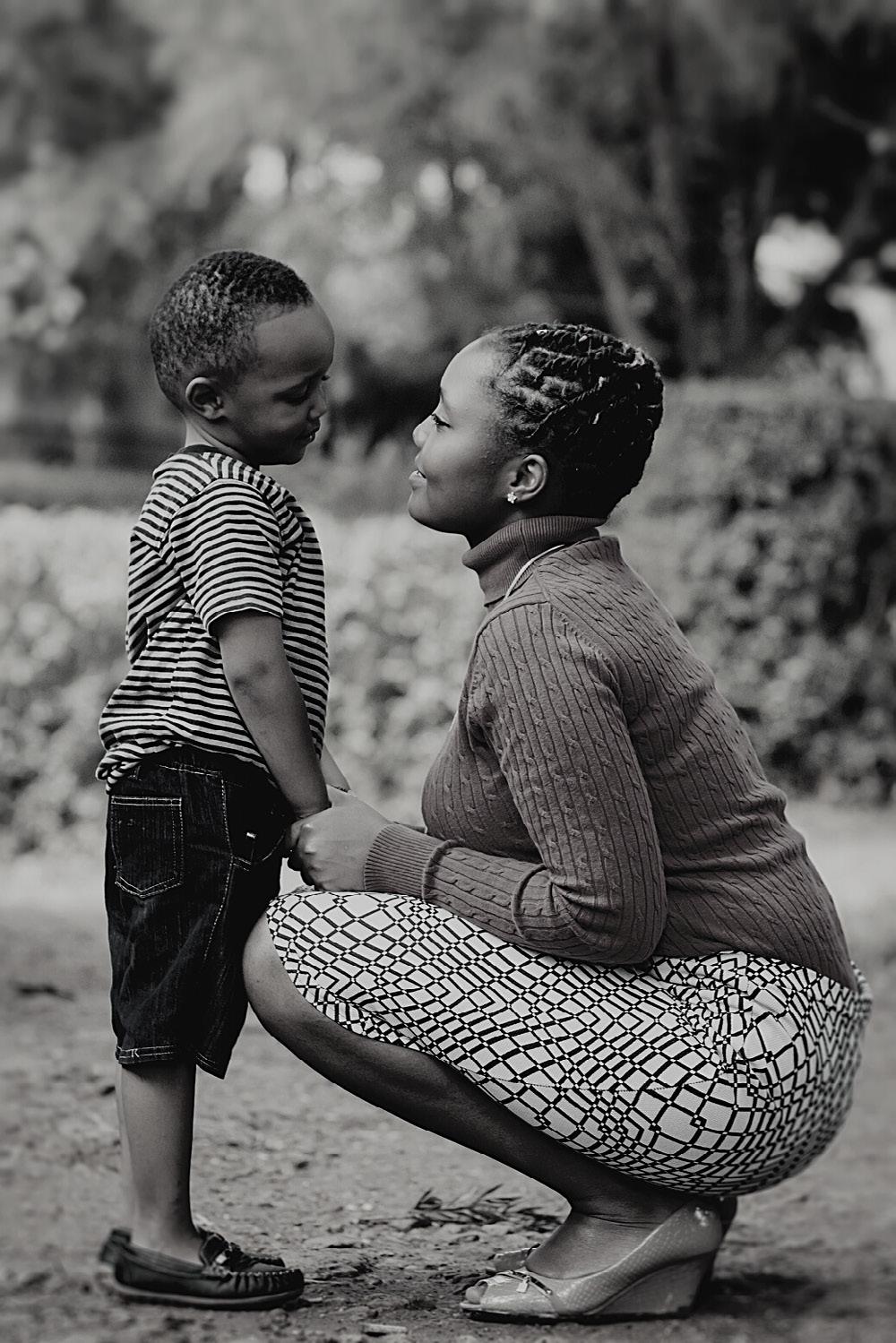
1 http://www.templegrandin.com/temple_articles/transition_ to_high_school.html
2 Deborah Reber, Differently Wired: Raising an Exceptional Child in a Conventional World (New York: Workman Publishing, 2018), 246.
3 Katherine Reynolds Lewis, The Good News About Bad Behavior (New York: Public Affairs, 2018), 25.

4 Jasmine Lee O’Neill, Through the Eyes of Aliens: A Book About Autistic People (Philadelphia: Jessica Kingsley Publishers, 1999), 83.

5 Kelly Williams Brown, Adulting: How to Become a Grown-up in 535 Easy(ish) Steps, Updated Edition 2018. (New York & Boston: Grand Central Life & Style, 2013), 5.


Ron Sandison works full time in the medical field and is a professor of theology at Destiny School of Ministry. He is an advisory board member of Autism Society Faith Initiative of Autism Society of America, the Art of Autism, and the Els Center of Excellence. Ron has a Master of Divinity from Oral Roberts University and is the author of A Parent’s Guide to Autism: Practical Advice, Biblical Wisdom published by Charisma House, and Thought, Choice, Action. He has memorized over 15,000 Scriptures, including 22 complete books of the New Testament. Ron speaks at over 70 events a year, including 20 plus education conferences. Ron and his wife, Kristen, reside in Rochester Hills, MI, with their daughter, Makayla.
Website: http://www.spectruminclusion.com

Facebook: https://www.facebook.com/SpectrumRonSandison


Email: sandison456@hotmail.com

 By Rebecca Duvall Scott
By Rebecca Duvall Scott
THE COVID-19 PANDEMIC OF 2020 HAS BEEN ONE FOR THE RECORD BOOKS. IN A FAST-PACED, HIGHTECH, PRODUCTION-DRIVEN WORLD, IT GRIDLOCKED EVERY PERSON AND SOCIETY FOR MONTHS AND THEN LEFT US FLOUNDERING TO FIND A NEW NORMAL WITH AN “EVERYTHING AT HOME” LIFE MODEL.
Many adults had to find a new groove as they transitioned work into dining rooms and bedrooms, and many children struggled to adjust to school in kitchens and living rooms. Whether families chose virtual nontraditional instruction (NTI) options or homeschooling, education at home has certainly been one of the most challenging efforts!
Sensory-smart strategies can make education-at-home experiences easier
Accommodations and environmental adaptations targeting sensory regulation can positively affect a myriad of negative thoughts, emotions, and behaviors in school-age (really any age) students. The greatest thing is that all of us have a sensory system through which we experience the world, so sensory knowledge can benefit every person.
A person’s sensory system is part of their nervous system. It is responsible for how they gather information from their environment through their senses, organize it in their brain, and then output behavioral responses. Sensory systems can
easily get out of whack when subjected to internal and external stressors. Those behavioral responses you may see during school at home time (such as a child’s attention deficits, hyperactivity, lethargy, disorganization, tears, etc.) are clues they may need extra support.
When the sensory system is regulated, a person feels calm, able to cope with stressors, engaged, focused, and ready to do their best work. The best news is there are some simple sensory-smart hacks to regulate the nervous system and improve the education-at-home experience until students can return to in-person instruction (or back to their community and social programs if they are already seasoned homeschoolers)!
• Create a flexible routine
Feel out how your family works best from home and try to keep the same relative order of events each day. Establishing a flexible but reliable routine decreases anxiety and increases productivity.

• Fill up your students’ sensory buckets before they must sit and attend
Prior to work time, engage your kids in movement and sensory-rich activities—jumping on a trampoline, swinging on a swing set, stomping like a dinosaur, playing with slime, kinetic sand, or Play-Doh—there are a million options!
Find what fills up your kid’s sensory system, and they can “eat” on it while they focus and cooperate during school!
• If you can, bring concepts off the page for struggling students
NTI is not one-size-fits-all, and there are many students who cannot learn well through a screen. Teachers may be open to letting you bring the lessons off the page/screen (like manipulating Legos for fraction work) and have you text them pictures for credit.
• Incorporate visual aids like a timer or to-do lists
Some kids feel anxious when transitions are sprung on them, like moving from listening to the teacher to doing work or jumping from subject to subject. When kids can see the layout, breaks, or finish line up ahead, they’re more apt to focus and apply themselves. Many teachers are happy to share lesson plans with parents.
• Do work in a calm, quiet space
Auditory and visual distractions can derail some kids. Set their school space up in a calm, quiet place and encourage other family members to be respectful of their need to listen and attend.
• Take frequent breaks if possible
In between subjects or virtual meetings, move the body! Constantly go back to the idea of filling up their sensory
•
buckets so they don’t get low and result in edgy, cranky kids.
Students may appreciate a bouncy exercise band on the front of their chairs to put their feet on, a tennis ball on two opposing chair legs so they can rock, a wiggle cushion, or some other alternative seating like an exercise ball or T-stool. They also may benefit from having hand fidgets or a variety of texture strips to feel to keep their hands busy while their brain is processing new information.
• Give that mouth work to do other than talking
Chewing on straws, or “chewelry” you can buy online, or eating a variety of cold, crunchy, sour foods can stimulate the mouth and free up the brain to attend and focus.
Doing school at home with your children may have already been your thing or at least a welcomed change, but let’s face it—most people were thrown for a loop when schools went to NTI. Teachers were not prepared for their classroom instruction to change, but they stepped up and made it work to continue student-learning. Parents were not prepared to have kids home all day and to become satellite teachers, but they, too, stepped up and are putting forth their best efforts to help their students reach their potential. Students, especially, were not prepared for their routines to change in such drastic ways, but they’re doing their best given the circumstances. Remembering to give grace to yourself and everyone involved frees up a lot of mental and emotional space to press on.

My favorite catchphrase is “adjust the expectations and plan for success.” Every day we adjust to find our footing and learn to work together in new ways. You do not have to know everything to be the teacher (or at-home facilitator) your child’s needs. You just have to show up and try your best, leaving “we can do this” footsteps for them to follow in. It is also good to focus on long-term goals, like who you want your children to be in 20 years, and work towards those rather than be consumed by the short-term chaos we feel. Most of all, focus on relationships first. There is assigned work, yes. There are deadlines, yes. But the deep truth is, when you look back at this time in 20 years, will it matter that your child did every single math equation, got through every spelling test, and could recite
all the presidents in order? Or will their character, including their work ethic, compassion for their neighbors, and ability to think outside of the box and flex through difficult times outweigh the academics? We can learn academics in the good times and bad (and make up for missed learning when things finally get back to normal), but what truly matters is building loving, dependable relationships and having a myriad of life skills to carry into adulthood. If that is the primary focus of your school at home, academic success will follow.
If you would like to learn more about sensory regulation and strategies that can be adapted to make your home (and school) more efficient and manageable, check out my memoir, complete with professional commentary by an occupational therapist, Sensational Kids, Sensational Families: Hope for Sensory Processing Differences for additional insights and tips.

Rebecca Duvall Scott is the author of bestseller and three-time Amazon Top 10 Hot New Release, Sensational Kids, Sensational Families: Hope for Sensory Processing Differences. This self-help memoir chronicles the research, interventions, and mindset shifts that helped her family through her son’s sensory processing disorder diagnosis and contains professional commentary by an occupational therapist.
Website: www.SensationalKidsSensationalFamilies.com Book: https://www.amazon.com/dp/1948238276/

 By Julia Cook, illustrated by Michael Garland
By Julia Cook, illustrated by Michael Garland
Anyone who cares about a child who is shy or socially awkward needs this book. Best-selling children’s book author Julia Cook introduces Herman Jiggle, a painfully shy kid who is too nervous to say hello or introduce himself to others. His words get stuck in his throat until he becomes tongue-tied. With help from Mom, Herman learns a trick or two to relax enough to untangle his words.

This first book in the Socially Skilled Kids series features a humorous storyline with relatable characters. It is easy for children to follow and has an empowering message about growing socially and emotionally. The illustrations are beautiful, and at the end of the book, there are additional learning tips for parents and caregivers to use to help their shy child. A must-read book written for kids ages 4 to 10.
Julia Cook is a former school counselor and teacher who never dreamed she could evolve into a national award-winning children’s author and inspirational speaker. Julia takes top research and creatively translates it into “kid language” that is both entertaining and engaging. Julia has published more than 60 children’s storybooks, including, Uniquely Wired: A Book about Autism and its Gifts, But It’s Not My Fault, and I Just Don’t Like the Sound of No! Her ultimate goal is to make a positive difference in the lives of children by teaching lifelong problem-solving skills. Cook’s research-based books have been referenced in such publications as Parent’s Magazine, The New Yorker, The Chicago Tribune, Care.com, Military Spouse, Yahoo.com, Drlaura.com, and babyzone.com. She has also been featured on CNN’s HLN News and on numerous metropolitan networks including Atlanta, Seattle, and Chicago. She is the recipient of many book awards, including The Association of Educational Publisher’s Distinguished Achievement Award, the National Parenting Seal of Approval, Teacher’s Choice Award, and the Mom’s Choice Award.
Julia frequently delivers entertaining and engaging keynote addresses at national and international education, counseling, and character conferences. She has presented in over 1000 schools nation-wide. Twitter, Facebook or Instagram: @BoysTownPress
 By Chris Abildgaard, LPC, NCC, NCSP
By Chris Abildgaard, LPC, NCC, NCSP
A 17-YEAR-OLD MALE CLIENT RECENTLY CAME IN TO SEE ME FOR A SESSION. HE SAT DOWN WITH HIS MASK ON AND SAID, “I HATE THIS, CHRIS, I REALLY DO. COVID AND THIS WORLD RIGHT NOW SUCK.” I FOLLOWED UP WITH THE QUESTION, “WHAT IS IT THAT YOU HATE THE MOST?” TO THAT HE REPLIED, “THE UNKNOWN; THE INABILITY TO PREDICT WHAT WILL HAPPEN NEXT; THE FEELING OF NOT HAVING ANY CONTROL OVER LIFE AND THIS WORLD.”
Ilooked back at him and simply said, “Yeah, it sucks, and you are right to feel all of those emotions and fears. However, how long will we let them sit in us? How long will we worry about the unknown or worry about when the world will be “normal” again? What can we do now to start shifting our mindset to a more positive outlook so we as people and a society can keep growing?”
As we enter a new year, we have to keep our eye on the prize for ourselves, our children, and the clients we may work with!
This year that “prize” will be different. In past years, maybe we set professional goals, aimed to travel somewhere we have always wanted to visit, or saved for the fancy new car. This year, we must help children and adolescents identify and redefine “the prize” as being found within those small nuggets of time that have the potential to bring us happiness. Below are some thoughts to start that conversation as a parent, teacher, or clinician that can help your children or the young people you work with start to shift their mindset to start this year with a more positive and productive outlook.
As we head into 2021 and reflect on 2020, all of us will naturally feel overwhelmed. Given all the factors we have been forced to endure, it is only natural we have doubts that this new year will be any better. But it can be if we focus on the little things in life that bring us joy. As parents and professionals, we must validate the fact that we are all wanting to maybe travel more or have those large family birthday parties like we used to. The reality is we may not be able to engage in those activities for a little while. So how can we move on from wanting them?

This is the time we need to talk about what we “need” vs. what we “want.” Needs come in different forms for sure, but basic human “needs” tell us that eating our favorite food, listening to our favorite music, or going for a walk to explore a local pond with mom or dad can bring us a level of happiness or contentment for a period of time. It is important to teach our children and clients that it is okay that the period of time we experience that happiness is maybe not as long as it used to be or as we want it to be. Emotions come and go; they fluctuate based on the context, our expectations, and what we head into the situation thinking we will get out of it. This can be the game-changer. How can we mentally and emotionally prepare ourselves (or our children/clients) for looking at the idea of taking a walk around a pond and have that level of happiness or contentment last?
It’s reshaping how we think about the idea of “doing something.” For example, I will share that for years my kids have always talked about “doing something fun with dad.” Doing something “fun with dad” usually costs money and involves obtaining something or relying on something external to help bring some sense of internal joy. We, as a society, rely on the external “bling” to bring internal joy or other positive emo-
tions. Is that wrong? No. However, if we are to move forward during this time of uncertainty, unpredictability, and sometimes chaos, we need to be able to find joy, happiness, or contentment in the small things in life.
•
•
• Talking about the “why”—with this, I am suggesting we talk more with our children or clients about the “why” behind going for a walk or just hanging out with a friend with masks on and socially distancing for a period of time. What is it about those events that we should be celebrating, and what can we take away from doing those things?
• Modeling that life is largely about the small times, not just the big
Allowing ourselves to find happiness or contentment in those small everyday events will increase our positive outlook on life and those we are around. As we head into the new year, it is vital we understand the maintenance of our mental health (and those of our kids) will entail a certain level of modifying how we look at happiness and that feeling of being content. Modeling for our children and clients and reshaping how we look at “being happy” can alter our outlook on the coming year, the goals we have, and our overall mental wellbeing. Happy New Year, everyone, and embrace those life nuggets so they may bring the needed happiness we all are looking for during times like this.
Website: https://www.sociallearningcenter.org/ Facebook: https://www.facebook.com/SocialLearningCenter Twitter: https://twitter.com/SLC545 LinkedIn: https://www.linkedin.com/in/chrisabildgaardslc/
How can we help young people understand this concept? We can help shape their mindset about celebrating the “small times” byChris Abildgaard, LPC, NCC, NCSP, is the owner and director of the Social Learning Center, LLC, located in Cheshire, CT. Chris has been in private practice for over 13 years. Along with his private practice, Chris is an Adjunct Professor in the Special Education department for St. Joseph’s University located in West Hartford, CT. Chris is a Nationally Certified school psychologist, a Board Certified national counselor, and a licensed professional counselor with a specialization in autism spectrum disorders. Chris is currently pursuing his doctorate of education (EdD) in School Psychology from Loyola University Chicago. In his free time, Chris loves hanging out with his three children, playing tennis, and grilling!
Us, as the adults, showing excitement over small events of the day
Verbalizing at the end of each day two or three things that made us feel “happy” about the day
This is the time we need to talk about what we “need” vs. what we “want.”By Connie Persike, MS, CCC/SLP
None of the familiar routines to transition back to school had occurred. We didn’t go school supply or clothes shopping. Her school canceled picture day in August as well as their Open House. All these rituals help all of us transition back to school after the summer break.
Due to the high amount of COVID-19 cases in our area, we had none of our typical routines and rituals to foreshadow the beginning of the school year. For my daughter, that meant she was still in summer mode. She wanted to play! She was also at home trying to focus and work with all her toys around her, pulling her away from an academic mindset and focus.
Those first weeks were a challenge, to say the least! I was trying to work virtually with continued distractions; we had too many passwords to remember and so many new virtual platforms to learn. I found myself in power struggles with my daughter to get her work done, but I didn’t have the time to follow through and ensure her tasks were completed. This led to evenings in front of the computer screen yet again to get her asynchronous learning completed. We were all doing the best we could, but something had to change.
Enter executive functioning supports! These have been my lifesaver during this time. Executive functioning supports are strategies that help us plan our day, organize our time, accomplish our goals, and regulate our emotions. Think of executive functioning skills as the skills managers need to manage a company. During times of stress, executive functioning skills are one of the first skills to weaken. Our pre-frontal cortex goes “offline” during chronic stress and fatigue. We need to rely on external supports. This article will provide you with some strategies that can help you get organized, remain focused, and accomplish the tasks that need to get done, all while hopefully decreasing power struggles with your child and helping them stay focused and regulated.


One of the first supports we needed to get in place were visual cues for when my daughter could enter my office and her dad’s workspace while working from home. I was supervising graduate students at the university, delivering professional development, and providing teletherapy to students. My husband was teaching from home. We implemented a color-coded system to cue our daughter when she could interrupt us during our work times because we, like many others, were trying to do this all without childcare or extra support. The color-coded system consisted of the following expectations:
Green: Enter as needed
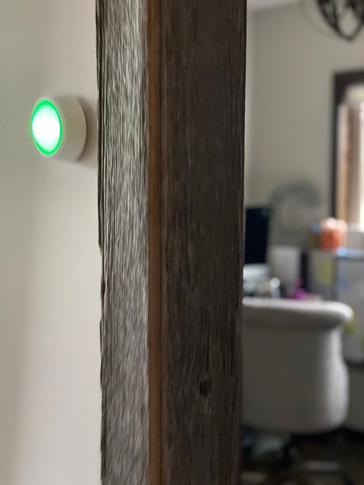
Yellow: Knock and quietly enter the room
Red: Only enter in an emergency
WHETHER YOU ARE WORKING FROM HOME, A STAY-AT-HOME CAREGIVER, OR COMING HOME IN THE EVENING TO HELP YOUR CHILD WITH VIRTUAL SCHOOLING, EXECUTIVE FUNCTIONING SUPPORTS CAN HELP. I’M NOT SURE ABOUT YOU, BUT I FOUND MYSELF ARGUING WITH MY DAUGHTER MUCH MORE OFTEN THAN IS TYPICAL AT THE BEGINNING OF THE YEAR.
You can use low-tech visual supports such as stop, do not enter, and yield signs or high-tech battery-operated lights that can be placed outside workspaces.
I found my daughter consistently asking her teacher or me how long her synchronous or live meetings would last. Timers were a great solution. It is important children know what they have to do, how long they have to do it, and when they are finished. Timers also helped remind us of when live meetings were scheduled because, let’s face it, when we are in the zone at work, time can slip by quickly. The following timers may be helpful:
y Clock timers
y Oven timers
y Amazon Alex or Echo
y Google Home
y Digital timers
y iPad timer apps
This may seem obvious, but when we are in survival mode, it does not always happen. Carve out some time and get those passwords written down in a central location. We chose a small 10x13 dry erase board to write out all passwords and posted it right above my daughter’s daily schedule.

Get those schedules written down! Most classrooms have daily schedules displayed somewhere. Even if you have a schedule in your child’s virtual classroom, it’s not the same as seeing it laid out clearly on one page in a place you can access at any time. This has been such a great help for us!

Making the schedule interactive is extremely helpful for task completion. It brings the child or adolescent back to the schedule
and gives a sense of accomplishment when an item is removed or crossed off. Different methods to indicate completion can consist of crossing activities off when they are finished, removing tasks from the schedule, placing an X over activities, or moving them to another column. A daily schedule should be organized in a top-down or left-to-right fashion and consist of one column or one row only. Resist the urge to add another row or column. Multiple rows and columns become visually overwhelming as well as difficult for children to understand as they often look and read like a choice board rather than a schedule. This is especially important for individuals who use a communication device or visual choice boards to communicate their wants and needs.
I decided early on I was not going to fight all day with my child. It was affecting our relationship, making our days difficult, and putting too much pressure on all of us. This is when I remembered a strategy useful for individuals who procrastinate—make the to-do list moveable so that if tasks do not get finished, they have to be physically moved to the next day. This allows the individual to see and visualize the tasks or todo items pile up. We decided to use a large magnetic dryerase board divided off with tape by days as well as magnetic dry-erase Post-its. It is also possible to do this with a weekly paper calendar and Post-it notes; either will work.
Write each task on a Post-it note for each day. Color-coding by days or subjects can be helpful as well. When tasks are completed, remove them from the list. If tasks are not complet-


ed, physically remove the Post-it and place it on the next day. Continue doing this until the to-do item is completed and can be removed. Our first week of implementation led to a very long Saturday and Sunday catching up on tasks!

During times of stress, we must rely on external supports. Our neurology requires it. These strategies and supports can help you manage your household by supporting your executive functioning skills. Remember to be kind to yourself. We are all doing the best we can in this new reality. I’m truly hopeful one, some, or all of these strategies will help you during this uncharted territory we are experiencing, trying to juggle careers, parenting, and educating our children. Be safe, and stay well.


Connie Persike, MS, CCC/SLP, is a highly experienced speech-language pathologist with 20 years’ experience in private practice and school settings. She is the founder of CP Consulting, where she brings her experience to provide insight, guidance, coaching, and support to school districts, agencies, and families across Wisconsin needing expert direction in working with children. In addition to running her business, Connie teaches part-time at the University of Wisconsin Madison as a Clinical Associate Professor in the Communication Sciences & Disorders Department. Connie has been invited to present at a state level on a variety of topics such as functional behavioral assessments, positive behavioral supports and interventions, autism, anxiety, and evidence-based interventions. She is a member of the American Speech Hearing Association, the Association of Supervision and Curriculum Development, and the Autism Society of Wisconsin. Connie has been involved in statewide work groups to help develop and improve core programming in schools and is a published writer for Autism Parenting Magazine. Connie resides in Waunakee, WI, with her husband and daughter. During her free time, she enjoys spending time with her family, reading, and landscaping.

D V E R T I S E W I T H U S R E A C H Y O U R C U S T O M E R S I N T H E N E W Y E A R

 By Stephanie C. Holmes, BCCC, Certified Autism Specialist
By Stephanie C. Holmes, BCCC, Certified Autism Specialist
ACCORDING TO AVAILABLE RESEARCH AND ANECDOTAL EVIDENCE IN MY OWN PRACTICE, STU DENTS ON THE AUTISM SPECTRUM ALREADY WERE FEELING ISOLATED AND EXCLUDED BE FORE WE WENT INTO LOCKDOWN AND LIFE TURNED UPSIDE DOWN. HOW HAS COVID-19 IM PACTED STUDENTS ON THE SPECTRUM? FIRST, LET’S DISCUSS STUDENTS’ PERSPECTIVES OF THEIR SCHOOLING PRIOR TO THE PANDEMIC.
In my dissertation research completed this year, Creating an Inclusive Climate for Students on the Autism Spectrum (Holmes, 2020), seven students participated in the qualitative research on their experience in the public school system. While this number seems small, in qualitative research, five to eight persons are required for studying a phenomenon or experience of a specific population (Leavy, 2017). It is important to note the students represented both males and females, autism levels one, two, and three, and the students were 18 or older. Some had qualifiers of non-speaking, learning differences and disabilities, selective mutism, and other anxiety disorders. It is also very important to note this study, while on a vulnerable population, met the criteria and scrutiny of the Institutional Review Board’s ethical practices for my program of study.
The purpose of the study was to examine barriers to inclusive practices and hear from administrators, teachers, paras, school counselors and psychologists, other specialists, parents, and students on the spectrum. This article will discuss the perspective of the student as their voices are not often included in discussing best-practices for what they would define as inclusion. A subsequent article will discuss ideas from these students for better inclusive practices.
It is not a surprise that students who struggle with social interactions would be easy targets of bullying (Elliott, Hwang, & Wang, 2019; Sofronoff et al., 2011), especially by queen bees or other ringleader bullies (Smith, 2017; Stellwagen, 2013; Sutton, Smith & Swettenham, 2001). Current research of ringleader or queen bee bullies indicates these individuals have high theory of mind skills and manipulate vulnerable individuals. They have an ability to often get away with doing so because they are seen as leaders or prosocial in their schools (Lonigro, Laghi, Baiocco, & Baumgartner, 2014; Sutton, Smith & Swettenham, 2001).
However, research reveals students on the spectrum are not only bullied by peers but sometimes are bullied by or experience negative biases from educators and staff who have a lack of understanding of autism and other disabilities (Ernsperger, 2016). Zero-tolerance policies concerning behavior are especially harmful to students on the spectrum and other disabilities and tend to end up targeting vulnerable students because of behavioral challenges (which are usually communication issues more than behaviors to manage) that may occur with autism (Ernsperger, 2016).
The students interviewed had mixed feelings about their school experience; the female students became anxious and emotional when recounting incidents that happened at school. However, all the students in the study felt disconnected from the student population and that most of their teachers or administrators did not understand them or autism.
134-146)
Student One said, “I was different [at school]—that is not the thing to be. I was never invited to do much of anything. I was the odd kid out.” When asked what you want teachers to know, she replied, “Autism is not always easy to see,” and she added that teachers first need to understand autism and then get to know their students individually to understand how to best support them. She also felt that pull out resources are embarrassing for middle and high school students and adds to the stigma. She suggested since many students on the spectrum have special interests, why not allow them to do projects or share and feel competent in front of their peers of subjects in which they have become expert. She felt the school could do a better job bridging the gap between autistic students and the overall population.
Student Two noted, “I had a bunch of bullying during my freshman and junior years. I felt ignored and left out at school in middle school and high school.” She discussed that in elementary school, the Autism Society of her state visited the school and did inclusion classes, and she felt she had friends in elementary school but was disliked and abused by various teachers. The situation changed in middle and high school, where she felt teachers were more aware of her and included her, but the students did not.
It was confusing that peers she interacted with in other clubs and Girl Scouts were friendly when adults were around in these groups yet excluded or bullied her in other situations in school. When asked what teachers could do better, she said
This table was listed as Appendix L in the dissertation study and represents the top barriers noted by students on the spectrum.
# of Students
Did not feel safe physically or emotionally at school 7/7
Did not feel wanted or included by the student body 7/7
Lack of peer awareness of autism 7/7
Lack of teacher understanding of autism/lack of individualization 7/7
Experienced teasing for autistic mannerisms or behaviors 7/7
Experienced verbal bullying 7/7
*Lack of social supports or social skills building 6/6
*Lack of social skills or supports mentioned in IEP 6/6
Experienced exclusion 6/7
Was not invited to outside parties or events 6/7
How I was treated by peers/teachers was detrimental to my mental health 6/7
Felt stigmatized for my autism 6/7
Was treated as a non-person by school/peers/staff
(Treated like a toddler, monster, burden, alien, animal, problem, outcast, bomb/explosion) 5/7
*One student from Canada was diagnosed late in school life and did not have IEP, and therefore did not qualify for all questions.
What barriers were described by students on the autism spectrum?
teachers should be educated and lead the way in breaking the stigma for students with differences. She suggested peer training should be at every level of school.
Student Three communicated with a letter board and stated his frustration with teachers assuming he was nonverbal. “Nonverbal indicates non-thinking, which cannot be further from the truth for non-speaking autistics like me. It indicates having no language. I have complete receptive language but cannot output my thoughts due to motor planning deficits. As this recording demonstrated, I can speak [meaning verbally] per se but not reliably or meaningfully. (Note: Person Three would speak a word he was spelling on his letterboard and keep repeating that same word over and over as he continued to point and spell out his thoughts on the letterboard). The majority of the time [at school], I was treated or spoken to or through as if I were a toddler.” When asked if he felt included at school, he responded emphatically on his letter board, “NO!”
Student Three experienced physical abuse at the hand of a para, and he further described his experience as, “It was a nightmare and a joke all rolled into one. And that was with extremely involved and aware parents trying to make the right thing happen. The system is significantly broken. Teachers who are real advocates for students are pressured not to be.

The most disturbing thing is that once the error of their ways is pointed out, they still don’t want to do the right thing. I haven’t even touched on the irreversible damage their restraints and behavior programs produce. Parents who send their non-speaking autistic child to public schools do so at great peril to their child. My body can behave badly at times, largely out of my intentional control. It is more likely to do so when I am stressed, anxious, demeaned, and ridiculed. It becomes a vicious cycle, and I am viewed as a monster.” He was adamant that letter boards and other communication devices be allowed for non-speaking individuals and allow the student choice in what communication method works for them, even if it is inconvenient to the school.
Student Four described herself as academically successful but did not feel school was a safe place to be herself. She felt she had to mask. Teachers treated her kindly because she was a star student, but peers were not welcoming or inclusive. She is now a teacher, and when asked how schools can be more inclusive, she responded, “For peers, explaining at an age-appropriate level, you know their classmates’ needs.” She clarified that teachers could not give out confidential information but simple details and explanations like, “Bright lights really bother Johnny, so we are going to keep the lights dimmer.” If students press for why as students do, she advised offering a simple explanation, “Johnny’s brain works differently, so
that’s why he does this, and when he does this, we can help him by…” She wanted to spread knowledge to teachers and peers. She also stated teachers need to lead the way with inclusion by educating themselves and advocating for their students.
Student Five was diagnosed in high school after a traumatic experience. She was doing dual enrollment classes at a local college and was taken advantage of by a student at the college. He took advantage of her naivety, and she was unable to read the social cues that she was in danger. Because she was accelerated academically and shy, her Asperger’s was missed.

When I first asked if she had been bullied at her high school, she said no, but asked if this scenario counted. She described, “A lot of what they did bordered between those [bullying and teasing]. It definitely started as teasing. There were points where that did turn into what I would consider bullying, where some of the older males from the group would back me into a corner. There were times I was left hyperventilating on the ground, even in front of the teacher, who then walked out of the room and left me hyperventilating on the ground in a panic attack. I think she thought I was faking it because she was laughing. It wasn’t funny. I was not faking it. There was one time I clearly remember being hit with a yardstick across my hand. I learned later one of the reasons one of the guys did
this was because it was funny, and it was entertaining to him.” She suggested mentor programs and extra peer supports for teens on the spectrum while saving face. She felt students were not really included in their IEP process, and many students with autism do not know what to ask for in the way of supports.
Student Six had moderate autism and processing delays. He said he felt excluded throughout his entire school life. He felt like people disregarded him because of his differences, and he desperately wanted a friend and to be included. He was nervous about our interview and struggled at times to articulate things, but he came prepared with something he wrote and wanted included in the study. He wrote, “There’s so much stigma with autism, and it has to stop. Some autistics are still being forced to hide themselves. For example, if an autistic does something out of the ordinary or makes mistakes, people tell them that they don’t want to be friends or whatever. Society can force their way upon others who are different to hide or mask their autism. That’s not how it works, though, at least not in any way that’s healthy. There shouldn’t be a stigma. When you are accepting to be someone’s friend, you should accept and try to understand all aspects of a person. We autistics shouldn’t feel the need to hide anything. People view autism as a source of annoyance, disappointment, or worse in different ways to different degrees. It’s not fair
to place judgment upon someone when you don’t even fully know them. Having a true friend is having someone who accepts you for you, regardless of your flaws.”
Student Seven said she disliked high school, and just speaking about it brought her to tears. She said back in the early 2000s, teachers were even less aware of autism in females. She was diagnosed in middle school and recounted how she found out about her diagnosis. Her mother told her teacher and asked him not to tell her—that her therapist would be doing so—but asked what supports could be in place. She recounted the story, “He [the teacher] took me out of the room with the teacher aid, and he proceeded to tell me that I was damaged in the brain, and I was never going to amount to anything, and this is why all the other kids hated me. This is why I would never be able to go to college or amount to anything, worth anything, basically. That I never would be normal and probably was going to end up in a group home someday, and I would never be able to take care of myself or make money. Essentially, I should just give up now, basically.” She stated that she wants peers and teachers to understand their words have impact and can damage people. She felt her teachers were not educated or accepting of autism. She wanted teachers to know that when you treat a student poorly, you are essentially allowing that same behavior in students, and this can significantly affect mental health and self-esteem.
As you read, students on the spectrum were struggling and felt they were not supported long before COVID greatly impacted the services students were receiving. Clients on the spectrum indicated that COVID really exacerbated the feeling of loneliness and isolation because, as one said, “No one ever checks in on me from my school, and I realized I really did not have true friends. I was being tolerated.”
During my dissertation study, there were very few articles or research that included voices from students on the spectrum, and this is a travesty. In the name of protecting a vulnerable
population, these voices are often missing from research. Students on the spectrum have ideas about inclusion and better practices if we are willing to listen.
Elliott, S., Hwang, Y. S., & Wang, J. (2019). Teachers’ rating of social skills and problem behaviors as concurrent predictors of students’ bullying behavior. Journal of Applied Developmental Psychology, 60, 119-126. doi:10.1016/j.appdev.2018.12.005 Ernsperger, L. (2016). Recognize, respond, report: Preventing and addressing bullying of students with special needs. Baltimore, MD: Paul H. Brookes.
Holmes, S. (2018). Creating an inclusive climate for students with developmental delays (AS/ASD). Georgia Association for Positive Behavior Support Conference. Retrieved from https:// digitalcommons.georgiasouthern.edu/cgi/viewcontent.cgi?article=1303&context=gapbs
Holmes, S. (2020). “Creating an Inclusive Climate for Students on the Autism Spectrum” (2020). School of Educational Leadership 5. https://digitalcommons.acu.edu/school_ed_leadership/5
Leavy, P. (2017). Research design: Quantitative, qualitative, mixed methods, arts-based, and community based participatory research approaches. New York, NY: The Guilford Press.
Lonigro, A., Laghi, F., Baiocco, R., & Baumgartner, E. (2014). Mind reading skills and empathy: Evidence for nice and nasty ToM behaviours in school-age children. Journal of Child & Family Studies, 3, 581-590. doi:10:10.1007/s10826-013-9722-5
Smith, P. (2017). Bullying and theory of mind: A review. Current Psychiatry Reviews, 13(2), 90- 95. Retrieved from https://doi.org /10.2174/1573400513666170502123214
Sofronoff, K., Dark, E., & Stone, V. (2011). Social vulnerability and bullying in children with Asperger syndrome. International Journal of Research and Practice, 15(3), 356-372. doi:10.1177/1362361310365070
Stellwagen, K. K. (2013). Ringleader bullying: Association with psychopathic narcissism and theory of mind among child psychiatric inpatients. Journal of Autism and Developmental Disorders, 44(5), 612-620. doi:10.1007/s10578-012-0355-5
Sutton, J., Smith, P., & Swettenham, J. (2001). Bullying and ‘theory of mind’: A critique of ‘social skills deficit’ view of anti-social behavior. Social Development, 8(1), 117-127. https://doi. org/10.1111/1467-9507.00083
Dr. Stephanie C. Holmes, BCCC, is a professional counselor, educator, researcher, author, and certified autism specialist with neurodiversity training. However, her real credential comes from being a mother to an amazing young adult Aspie (AS) daughter. Dr. Holmes’ career focus changed in 2004 when her daughter was diagnosed with Asperger’s (now AS Level One). Her book Confessions of a Christian Counselor was released in 2015 and is available on Amazon. Dr. Holmes is available for consulting, training, and speaking at www.HolmesASR.com. She is the interim host of Converge Autism Radio, where topics of autism from childhood to adulthood are covered.

Students on the spectrum have ideas about inclusion and better practices if we are willing to listen.
CHILDREN WITH AUTISM AND OTHER SPECIAL NEEDS OFTEN HAVE SOME SORT OF SENSORY PROCESSING DISORDER. A COMMON SUBTYPE OF PROCESSING DISORDER IS SENSORY MODULATION DISORDER, WHICH REFERS TO THE MIND’S INABILITY TO REGULATE OR MODULATE INFORMATION RECEIVED FROM THE SENSES SO THE STIMULATION IS JUST RIGHT—NOT TOO MUCH AND NOT TOO LITTLE.
When kids with special needs have sensory modulation disorder, they may have difficulty organizing sensory information or focusing on the right stimulation at the right time.

Fortunately, there are some simple sensory integration activities and exercises that parents can use at home to complement and reinforce occupational therapy sessions. Treatment for autism works best when all of the authority figures in a child’s life work together, creating a safe but challenging environment for the child with autism to learn and grow.
Before we look at some of the practical activities parents can use at home, we need a brief overview of what sensory integration is and why it’s important. Sensory modulation disorder can show up in different ways:
Children who are over-responsive to sensory input become overstimulated and overwhelmed by the information they are receiving from their senses. Sometimes we describe this kind of child as sensory defensive, which means they are on guard against certain kinds of sensory stimulation,
typically touch (tactile defensive) or sound (auditory defensive).
Children who are under-responsive to sensory stimulation might appear lethargic, slow-moving, or seem like they have attention deficit disorder—when the truth is that the brain simply isn’t getting the stimulation it needs to engage with the environment or the subject at hand.

Some children respond to their underdeveloped sensory processing skills by becoming sensory seeking. These are the kids who may seem hyper or who seek out sensory stimulation via repetitive movement like twirling, hand flapping, and bouncing. They may often push, crash, or bump into things and chew.
Sensory integration therapy is a cornerstone of our applied behavior analysis program at Springbrook because sensory processing difficulties are often the root causes, or the triggers, for the maladaptive behaviors associated with autism spectrum disorder.
Kids with special needs who spin or bounce are usually trying to stimulate their vestibular system or their inner ear. The inner ear helps with balance, and it also helps the body know when and how fast it is moving. Any movement activity will engage the vestibular system, and vestibular activities can be stimulating for the under-responsive child and calming for the over-responsive or sensory seeking child.
Some of our favorite exercises for trying at home include:
• Playground
Think swinging, sliding, and merry-go-rounds. These recreational therapies are self-paced and fun, making them ideal for sensory integration.
•
Go to a trampoline park at a time you know it won’t be busy to practice movement with your child. These parks usually have the trampolines built into the floor so there’s no fear of heights to contend with.
•
This is a simple activity for younger children or children who may be afraid of larger movements.
•
Choose different objects in the room and ask your child to jump and spin to point at the object you’ve called out. For example, you might choose the TV, chair, window, or table. This activity not only stimulates the vestibular system, but also builds vocabulary.
Place ten objects on the ground and ask your child to pick each one up and place it in order on a low table. The repeated bending movement and inversion is a great way to stimulate the inner ear. Plus, if you use objects your child is interested in, like toy cars or baseball cards, the activity can also function as a reward-based activity.
While chewing is actually a good and necessary activity, it becomes a problem when it’s excessive, causes self-injury, or takes away from a child’s ability to participate in daily life.
Here are a few of our favorite oral motor activities that provide proper stimulation and reduce chewing and other behaviors:
•
You can provide that heavy input for the jaw and mouth your child is looking for by using crunchy and chewy foods as go-to snacks. Try granola, apples, carrots, pretzel rods, nut butters, licorice, or fruit leather. Chewing gum can also help children develop oral motor skills and help them focus.
•
Plain drinking straws are a fantastic tool for helping your child develop oral motor skills. Use straws for drinking, especially thick beverages like milkshakes or yogurt-based smoothies, as well as for games, such as blowing bubbles in a bowl of water or shooting pellets of paper across the room.
If you look around, you’ll notice there are lots of kids’ activities that involve the mouth. Try bubble blowers, kazoos, harmonicas, pinwheels, whistles, and blowguns. A vibrating toothbrush is also a great way to provide your child with increased stimulation.
Incorporating heavy work (the use of force to move an object) and proprioceptive activities (those that encourage your body to move) are necessary to help build up major muscle groups, joints, and ligaments. It is also essential to stimulate the proprioceptive receptors present in the tissues and to provide your child with greater proprioceptive feedback—the sense that allows your body to know where it is and how it’s moving in space so we can walk upstairs without looking at each step or take a sip of water without watching the glass all the way.
All children need heavy work activities to strengthen the proprioceptive input, but children with special needs such as autism generally have underdeveloped proprioception, meaning they need heavy work even more.
As an added benefit, heavy work tends to provide deep pressure to the muscles, which has a calming and organizing effect on the brain and nervous system. Finally, heavy work reduces problem behaviors in children with autism.
Here are some good ways to include heavy work in your child’s daily routines.
Heavy work activities can actually be a lot of fun! Many playtime activities use the major muscle groups, both in coordination and separately. Remember to combine weight with movement to reap the most organizing, calming benefits from deep pressure stimulation. As you plan playtime for your child, keep these kinds of movements in mind:
Any kind of jumping activity engages the lower body and activates proprioceptive input in the leg muscles and joints, while “crashing” activities engage the entire body. Try jump rope, hopscotch, bouncing on trampolines, or jumping and crashing into bed mattresses, piles of couch cushions, or large pillows. This may drive you crazy—but it’s so good for the kids! If you don’t want to put your furniture at risk, go to a trampoline park that includes foam pits and obstacle courses, which combine a lot of different heavy work activities in one place. Older kids may also enjoy wrestling, kickboxing, and organized sports activities.
Playing in a sandbox or at a water table, searching for treasure in the backyard, or building a snowman all provide excellent heavy work for the upper body while also improving hand-eye coordination. Make sure your child has plenty of little shovels, scoopers, and buckets and encourage lots of pouring from one container to another. Choose larger containers for more heavy work. For a good rainy-day activity, fill a large bin with rice or dry beans and bury toys for your child to find. Swimming or any kind of water play also uses the digging muscles.
The important thing is to find sensory-stimulating activities your child enjoys and build from there.
•
balls (carefully!), water balloons, a basketball, or any large, soft object like a big pillow or stuffed animal. The goal is for your child to encounter some resistance while catching and have to heave some weight while throwing. Ask your child to throw stuffed animals or pillows into a laundry basket to improve hand-eye coordination and gross motor skills while doing heavy work.
While not all children enjoy running for its own sake, this activity stimulates every muscle group and does some heavy proprioceptive work in the legs. If your child does not naturally like to run while playing, start small with short, fun foot races. Race your kid to the car after grocery shopping, for example. You can also do funny walks and crawls with your child, such as stomping in place, wheelbarrow walks, animal walks like crab walks and bear walks, snake slithers, and army crawls. Finally, riding bikes is an excellent heavy work activity. If your child can’t ride a bike yet or is afraid to try, start with scooters, balance bikes, or other self-propelled riding toys. You can even use a large skateboard your child sits or lies down on while scooting forward with their feet or hands.
•
• Climbing and hanging
Playgrounds are a great place to go for climbing and hanging equipment. Jungle gyms, monkey bars, climbing walls, and ladders use all of your child’s major muscle groups in coordination and provide wonderful proprioceptive input while hanging by the arms or legs stretches out the muscles and engages the joints and ligaments. At home, you can encourage your child to try climbing a tree, playing in a treehouse, playing on a rope swing, or climbing in and out of a bunk bed.
Kids love helping out around the house, especially if the chores are active enough and presented to them correctly. Make use of household chores to ensure your child is getting enough muscle and joint input throughout the day— and always remember the work doesn’t have to be done perfectly. Activities like helping with carrying groceries, laundry, doing outdoor work, taking out the trash, setting the table, washing the car, and vacuuming can help your child.
While these lists are a good place to start to introduce your child to new activities, none are exhaustive. The important thing is to find sensory-stimulating activities your child enjoys and build from there. With a little planning and effort, you can ensure your child gets enough activity and heavy proprioceptive work during the day.

•
Try tug-of-war games, sledding, pulling a wagon, pushing a friend or sibling on a swing, or push-ups. Playing catch is also an ideal way to warm up the arms and shoulders. If your child doesn’t have the hand-eye coordination to play catch with a glove and baseball, try bean bags, medicine
At Springbrook Autism Behavioral Health, we use a number of proven, evidence-based autism therapies to address problem behaviors and build life skills. Contact the ABA Program at Springbrook to learn more.
Brandon Clark is a Board-Certified Behavior Analyst (BCBA) at Springbrook Autism Behavioral Health in Travelers Rest, South Carolina. He is completing his doctorate degree in Psychology. Brandon began his career in the field of Applied Behavior Analysis in 2010. Since then, he has worked in treatment schools, private settings, crisis intervention settings, day program facilities, and owned a private practice for several years. Brandon is the author of the book, The Misfits; Told by a Behavior Analyst, detailing a collection of experiences from the treatment school where he first started. Currently, he is a Human Rights Committee member, Ethics Chair for South Carolina Applied Behavior Analysis (SCABA), and serves as a board member for Lowcountry Autism Foundation.

MINDFULNESS IS A WORD THAT HAS RECENTLY GAINED ATTENTION DUE TO THE PANDEMIC AND THE STRESSFUL TIMES WE ARE CURRENTLY LIVING IN. WE ARE ALL LOOKING FOR METHODS TO EASE STRESS AND IMPROVE OUR LIVES DURING THESE TRYING TIMES.
As a practitioner specializing in positive psychology, the resurgence of this word and the renewed interest in the practice of mindfulness are very encouraging. However, the word mindfulness is thrown about casually, and when working with students who have learning differences, we don’t always understand the concept of what mindfulness is and how we can apply it to positively enhance our lives.
There are many definitions of mindfulness. For example, mindfulness can be an act of paying attention, on purpose, to all the elements of our experience with an attitude of open acceptance, non-judgment, and compassion. On a very simple level, we all know slowing down in this fast-paced world would have benefits for overall health and well-being. However, even after a simple definition, it is easy to get lost in what mindfulness is and is not.
When we talk to young adults with learning differences about mindfulness and ask them what it is, the most popular answer
is that mindfulness is meditation. In their mind, meditation may mean boredom. Mindfulness is much more than mediation and can be part of a mindful practice, but it doesn’t have to be. We try to teach our students that there are many elements of mindfulness. If the student finds a mindfulness practice they like, you can suggest they weave that practice into their everyday lives. Incorporating mindfulness into our life has been clinically proven to lower anxiety and depression.
A new year is a great time for students and families to use mindfulness to lower stress levels and enhance more vivid and personal experiences. The earlier definition provided for mindfulness focuses on the idea that mindfulness is the “act of paying attention.” It is the idea of action with intention, and during the holidays, there are many ways to integrate intentional acts into your family’s time together.
One way to incorporate mindfulness into the holidays is with a thankful jar. This past year with COVID-19 lends itself to a slight twist with the thankful jar. Give slips of paper to

each family member and ask them to write down what they are thankful for and why. Then at dinner, you can take turns picking slips out of the jar and reading them to each other at the dinner table. This act has a way of making everyone very mindful of our families by expressing gratitude. Gratitude can make us mindful of our surroundings and our relationships. If you aren’t able to spend precious time with family in the new year due to COVID-19, you can mail out the slips of paper and ask that family members mail them back for a grateful jar reading via Zoom. The twist is to use mindfulness in a positive fashion to decrease stress and anxiety.
Meditation is a wonderful mindfulness tool. A meditation practice doesn’t have to be a formal one. As you enter a fresh new year, a simple way to meditate could be as simple as unplugging from electronic devices and finding a quiet place to spend a few minutes in relaxing breath. While the holidays may have brought you joy, they also may have brought stress. Breathing can stimulate a nerve in our body called the vagus nerve, which, when activated, can lower our blood pressure and heart rate. A few minutes of intentional breathing is all it takes to turn on the vagus nerve and decrease stress.
Another mindful strategy is savoring. Whether you are sharing a family favorite or a fancy new recipe, be sure to savor the flavors of the food. In essence, intentionally slow down and take the time to enjoy the flavors and nuances of the food. Look at the colors of the food on your plate and smell the aroma. Does the food have texture? What does the first bite (and the last bite) of food taste like? A savored meal should take substantially longer than your average one.

Mindfulness gives us the opportunity to focus on what really matters, appreciate our relationships with others, and enhance our life experiences by focusing on being here now. It’s easy for the mind to wander and miss out on the true joys of life. Practicing mindfulness lets us appreciate the present and enjoy special time with our families in an intentional and meaningful way.


Websites:
 Lori Stottler, LMHC, is a clinician at CIP Brevard and has worked in the mental health counseling field since 2014. The College Internship Program (CIP) is a comprehensive transition program that has specialized in the educational needs of teens and young adults with autism and learning differences for over 35 years, offering year-round and summer transition programs across the US since 1984.
https://cipworldwide.org/, http://www.cipbrevard.org/
Lori Stottler, LMHC, is a clinician at CIP Brevard and has worked in the mental health counseling field since 2014. The College Internship Program (CIP) is a comprehensive transition program that has specialized in the educational needs of teens and young adults with autism and learning differences for over 35 years, offering year-round and summer transition programs across the US since 1984.
https://cipworldwide.org/, http://www.cipbrevard.org/
The twist is to use mindfulness in a positive fashion to decrease stress and anxiety.

